Buccal Collection
Isohelix Buccal Swabs are designed with our patented head matrix to maximize sample quantity per collection giving you the best possible results.
With multiple options available for both storage and quantity there’s an Isohelix Buccal Swab to suit every requirement.
Buccal Stabilization
Isohelix Buccal Sample Stabilization Kits are designed from the ground-up to work exclusively with buccal samples, giving maximum sample quality and yield, allowing you to perform even the most demanding downstream applications.
With options for DNA, RNA and Microbiome, Isohelix Stabilization Kits present an easy to use and affordable platform for swab sampling that would have previously been unavailable or unaffordable.
Buccal Extraction
Isohelix Buccal Extraction Kits are designed to work exclusively with buccal swabs, yielding the best results on the market. Whereas most kits are suited to generic testing for a variety of sample formats, Isohelix Buccal Extraction kits are fully optimized to work with all buccal swab samples.
With a variety of different method formats available, each Isohelix kit has been developed to help achieve the best results possible whilst fitting seamlessly in to existing systems and practices, therefore reducing costs and saving valuable time.
Isohelix Buccal Swabs Superior Performance
The Isohelix range of Buccal Swabs has been designed to give increased yields of high quality buccal cell and genomic DNA and offer significant advantages over other swab designs.
Publications Including Isohelix Swabs
COVID-19
Brune, Zarina, et al. “Effectiveness of SARS-CoV-2 Decontamination and Containment in a COVID-19 ICU.” International Journal of Environmental Research and Public Health 18.5 (2021): 2479. https://doi.org/10.3390/ijerph18052479
Burdett, Alison, et al. “Pooled sputum to optimise the efficiency and utility of rapid, point-of-care molecular SARS-CoV-2 testing.” BMC infectious diseases 21.1 (2021): 1-10. https://doi.org/10.1186/s12879-021-06316-z
Jayakody, Harindi, et al. “Molecular diagnostics in the era of COVID-19.” Analytical Methods 13.34 (2021): 3744-3763. https://doi.org/10.1039/D1AY00947H
Parker, Ceth W., et al. “End-to-End Protocol for the Detection of SARS-CoV-2 from Built Environments.” Msystems 5.5 (2020). https://doi.org/10.1128/mSystems.00771-20.
Somerville, Carter C., et al. “Prospective analysis of SARS-CoV-2 dissemination to environmental surfaces during endoscopic procedures.” Endoscopy International Open 9.05 (2021): E701-E705. https://doi.org/10.1055/a-1395-6946
GWAS/Cohort Studies
Bankvall, Maria, et al. “A family‐based genome‐wide association study of recurrent aphthous stomatitis.” Oral Diseases 26.8 (2020): 1696-1705. https://doi.org/10.1111/odi.13490
Bernardi J.R., Ferreira C.F., Nunes M., da Silva C.H., Bosa V.L., Silveira P.P., and Goldani M.Z. (2012) Impact of perinatal different intrauterine environments on child growth and development in the first six months of life-IVAPSA birth cohort: Rationale, design, and methods. BMC Pregnancy and Childbirth 12: 25. https://doi.org/10.1186/1471-2393-12-25
Jabbar-Lopez ZK, Gurung N, Greenblatt D, et al. Protocol for an outcome assessor-blinded pilot randomised controlled trial of an ion-exchange water softener for the prevention of atopic eczema in neonates, with an embedded mechanistic study: the Softened Water for Eczema Prevention (SOFTER) trial. BMJ Open 2019;9:e027168. https://doi.org/10.1136/bmjopen-2018-027168
Marsaux, C.F., Celis-Morales, C., Fallaize, R., Macready, A.L., Kolossa, S., Woolhead, C., et al. (2015) Effects of a Web-Based Personalized Intervention on Physical Activity in European Adults: A Randomized Controlled Trial. Journal of medical Internet research 17: e231. https://doi.org/10.2196/jmir.4660
Wienholtz, Nita Katarina Frifelt, et al. “Cohort profile: COpenhagen ROsacea COhort (COROCO) and COpenhagen MIgraine COhort (COMICO).” BMJ open 10.8 (2020): e039445. https://doi.org/10.1136/bmjopen-2020-039445
SNP’s/Genotyping
Almomani B., Hawwa A.F., Millership J.S., Heaney L., Douglas I., McElnay J.C., and Shields M.D. (2013) Can certain genotypes predispose to poor asthma control in children? A pharmacogenetic study of 9 candidate genes in children with difficult asthma. PloS One 8: e60592. https://doi.org/10.1371/journal.pone.0060592
Ammerdorffer, Anne, et al. “Genetic variation in TLR10 is not associated with chronic Q fever, despite the inhibitory effect of TLR10 on Coxiella burnetii-induced cytokines in vitro.” Cytokine 77 (2016): 196-202 https://doi.org/10.1016/j.cyto.2015.09.005
Andersson, Anna Maria, et al. “Assessment of biomarkers in pediatric atopic dermatitis by tape strips and skin biopsies.” Allergy (2021) https://doi.org/10.1111/all.15153
Bakeberg, Megan C., et al. “The TOMM40 ‘523’polymorphism in disease risk and age of symptom onset in two independent cohorts of Parkinson’s disease.” Scientific reports 11.1 (2021): 1-9. https://doi.org/10.1038/s41598-021-85510-0
Bhatt, Ishan Sunilkumar, et al. “Association Analysis of Candidate Gene Polymorphisms and Audiometric Measures of Noise-Induced Hearing Loss in Young Musicians.” Otology & neurotology: official publication of the American Otological Society, American Neurotology Society [and] European Academy of Otology and Neurotology 41.5 (2020): e538. https://doi.org/10.1097/MAO.0000000000002615
Bowler F.R., Reid P.A., Boyd A.C., Diaz-Mochon J.J., and Bradley M. (2011) Dynamic chemistry for enzyme-free allele discrimination in genotyping by MALDI-TOF mass spectrometry. Analytical Methods 3: 1656-1663. https://doi.org/10.1039/c1ay05176h
Buijs, S. B., et al. “Single nucleotide polymorphism (SNP) rs3751143 in P2RX7 is associated with therapy failure in chronic Q fever while rs7125062 in MMP1 is associated with fewer complications.” Clinical Microbiology and Infection (2020). https://doi.org/10.1016/j.cmi.2020.06.016
Capalbo, Antonio, et al. “Artificial oocyte activation with calcium ionophore does not cause a widespread increase in chromosome segregation errors in the second meiotic division of the oocyte.” Fertility and sterility 105.3 (2016): 807-814. https://doi.org/10.1016/j.fertnstert.2015.11.017
Celis-Morales, C., Livingstone, K.M., Marsaux, C.F., Forster, H., O’Donovan, C.B., Woolhead, C., et al. (2015) Design and baseline characteristics of the Food4Me study: a web-based randomised controlled trial of personalised nutrition in seven European countries. Genes & Nutrit 10: 1-13. http://dx.doi.org/10.1007/s12263-014-0450-2
Celis-Morales, C., Livingstone, K.M., Woolhead, C., Forster, H., O’Donovan, C.B., Macready, A.L., et al. (2015) How reliable is internet-based self-reported identity, socio-demographic and obesity measures in European adults? Genes & Nutrit 10: 1-10. https://doi.org/10.1007/s12263-015-0476-0
Celis‐Morales, Carlos, et al. “Physical activity attenuates the effect of the FTO genotype on obesity traits in European adults: the Food4Me study.” Obesity 24.4 (2016): 962-969. https://doi.org/10.1002/oby.21422
Centanni, T., Green, J.R., Iuzzini-Seigel, J., Bartlett, C.W., and Hogan, T.P. (2015) Evidence for the multiple hits genetic theory for inherited language impairment: a case study. Front Genet 6: 272. https://doi.org/10.3389/fgene.2015.00272
Centanni, T., Sanmann, J., Green, J., Iuzzini‐Seigel, J., Bartlett, C., Sanger, W., and Hogan, T. (2015) The role of candidate‐gene CNTNAP2 in childhood apraxia of speech and specific language impairment. Am. J. Med. Genet 168: 536-543. https://doi.org/10.1002/ajmg.b.32325
Chiu, Christine L., Nerissa L. Hearn, and Joanne M. Lind. “Development of a Risk Score for Extraintestinal Manifestations of Coeliac Disease.” Medicine 95.15 (2016). https://doi.org/10.1097/MD.0000000000003286
Cimino, Silvia, et al. “The μ‐opioid receptor gene A118G polymorphism is associated with insecure attachment in children with disruptive mood regulation disorder and their mothers.” Brain and behavior 10.7 (2020): e01659. https://doi.org/10.1002/brb3.1659
Fallaize, Rosalind, et al. “The effect of the apolipoprotein E genotype on response to personalized dietary advice intervention: findings from the Food4Me randomized controlled trial.” The American journal of clinical nutrition 104.3 (2016): 827-836. https://doi.org/10.3945/ajcn.116.135012
Fishe, Jennifer N., et al. “Methods and implementation of a pediatric asthma pharmacogenomic study in the emergency department setting.” Pharmacogenetics and Genomics 30.9 (2020): 201-207. https://doi.org/10.31487/j.JDOA.2020.02.04
Fishe, Jennifer N., et al. “SNPs in PRKG1 & SPATA13-AS1 are associated with bronchodilator response: a pilot study during acute asthma exacerbations in African American children.” Pharmacogenetics and Genomics 31.7 (2021): 146-154. https://doi.org/10.1097/FPC.0000000000000434
Gerner, Trine, et al. “‘Barrier dysfunction in Atopic newBorns studY’(BABY): protocol of a Danish prospective birth cohort study.” BMJ open 10.7 (2020): e033801. http://dx.doi.org/10.1136/bmjopen-2019-033801
Gielis, Els M., et al. “The use of plasma donor-derived, cell-free DNA to monitor acute rejection after kidney transplantation.” Nephrology Dialysis Transplantation 35.4 (2020): 714-721. https://doi.org/10.1093/ndt/gfz091
Gilbert-Diamond, Diane, et al. “Television food advertisement exposure and FTO rs9939609 genotype in relation to excess consumption in children.” International journal of obesity 41.1 (2017): 23-29. https://doi.org/10.1038/ijo.2016.163
Gorecki, Anastazja M., et al. “Single nucleotide polymorphisms associated with gut homeostasis influence risk and age-at-onset of Parkinson’s disease.” Frontiers in Aging Neuroscience 12 (2020). https://doi.org/10.3389/fnagi.2020.603849
Gosadi, I.M., Goyder, E.C., and Teare, M.D. (2014) Investigating the potential effect of consanguinity on type 2 diabetes susceptibility in a Saudi population. Hum Hered 77: 197-206. https://doi.org/10.1159/000362447
Grgic, Jozo, et al. “ADOR2A C allele carriers exhibit ergogenic responses to caffeine supplementation.” Nutrients 12.3 (2020): 741. https://doi.org/10.3390/nu12030741
Grgic, Jozo, et al. “CYP1A2 genotype and acute effects of caffeine on resistance exercise, jumping, and sprinting performance.” Journal of the International Society of Sports Nutrition 17 (2020): 1-11. https://doi.org/10.1186/s12970-020-00349-6
Harker, M., Carvell, A., Marti, V.P., Riazanskaia, S., Kelso, H., Taylor, D., et al.(2014) Functional characterisation of a SNP in the ABCC11 allele—effects on axillary skin metabolism, odour generation and associated behaviours. J Dermatol Sci 73: 23-30. https://doi.org/10.1016/j.jdermsci.2013.08.016
Huang, Wei-Hsin, et al. “Study of seven single-nucleotide polymorphisms identified in East Asians for association with obesity in a Taiwanese population.” BMJ open 6.8 (2016): e011713. http://dx.doi.org/10.1136/bmjopen-2016-011713
Ibiyemi, Olushola, et al. “Single Nucleotide Polymorphisms in COL1A2 gene and dental fluorosis among 4-and 8-year old Nigerian children.” Journal of Dentistry (2020). https://doi.org/10.31487/j.JDOA.2020.02.04
Jilani, M., Mohamed, A.A., Zeglam, H.B., Alhudiri, I.M., Ramadan, A.M., Saleh, S.S., et al. (2015) Association between vitamin D receptor gene polymorphisms and chronic periodontitis among Libyans. Libyan J of Med 10: 1. https://doi.com/10.3402/ljm.v10.26771
Johnson, Leslie Weaver, et al. “Factors influencing recovery from mild traumatic brain injury.” Brain injury 34.9 (2020): 1202-1212. https://doi.org/10.1080/02699052.2020.1795719
Jones, N., et al. “A genetic-based algorithm for personalized resistance training.” Biology of sport 33.2 (2016): 117. https://doi.org/10.5604/20831862.1198210
Kaur, Kiranjit, et al. “A Cross-Sectional Study of Bitter-Taste Receptor Genotypes, Oral Health, and Markers of Oral Inflammation.” Oral 1.2 (2021): 122-138. https://doi.org/10.3390/oral1020013
Khodakov, Dmitriy, et al. “Highly multiplexed rapid DNA detection with single-nucleotide specificity via convective PCR in a portable device.” Nature Biomedical Engineering 5.7 (2021): 702-712. https://doi.org/10.1038/s41551-021-00755-4
Krueger F., Parasuraman R., Iyengar V., Thornburg M., Weel J., Lin M., et al.(2012) Oxytocin receptor genetic variation promotes human trust behavior. Front Hum Neurosci 6: 4. https://doi.org/10.3389/fnhum.2012.00004
Lancaster, Claire, et al. “Prospective Memory: Age related change is influenced by APOE genotype.” Aging, Neuropsychology, and Cognition 27.5 (2020): 710-728. https://doi.org/10.1080/13825585.2019.1671305
Lancaster T., Linden D., and Heerey E. (2012) COMT val158met predicts reward responsiveness in humans. Genes, Brain and Behavior 11: 986-992. https://doi.org/10.1111/j.1601-183X.2012.00838.x
Li, Katherine, et al. “HLA-C* 06: 02 allele and response to IL-12/23 inhibition: results from the ustekinumab phase 3 psoriasis program.” Journal of Investigative Dermatology 136.12 (2016): 2364-2371. https://doi.org/10.1016/j.jid.2016.06.631
Livingstone, Katherine M., et al. “Fat mass-and obesity-associated genotype, dietary intakes and anthropometric measures in European adults: the Food4Me study.” British Journal of Nutrition 115.03 (2016): 440-448. https://doi.org/10.1017/S0007114515004675
Livingstone, Katherine M., et al. “Weekday sunlight exposure, but not vitamin D intake, influences the association between vitamin D receptor genotype and circulating concentration 25‐hydroxyvitamin D in a pan‐European population: the Food4Me study.” Molecular nutrition & food research 61.2 (2017): 1600476 https://doi.org/10.1002/mnfr.201600476
Livingstone, Katherine M., et al. “Characteristics of European adults who dropped out from the Food4Me Internet-based personalised nutrition intervention.” Public health nutrition 20.1 (2017): 53-63. http://dx.doi.org/10.1017/S1368980016002020
Livingstone, Katherine M., et al. “Characteristics of participants who benefit most from personalised nutrition: findings from the pan-European Food4Me randomised controlled trial.” British Journal of Nutrition 123.12 (2020): 1396-1405. https://doi.org/10.1017/S0007114520000653
Marsaux, Cyril FM, et al. “Changes in physical activity following a genetic-based internet-delivered personalized intervention: randomized controlled trial (Food4Me).” Journal of medical Internet research 18.2 (2016). https://doi.org/10.2196/jmir.5198
McCarty, Matt, and Keqin Gregg. “Methods of detecting synthetic urine and matching a urine sample to a subject.” U.S. Patent Application No. 14/752,511.
McDonnell M.N., Buckley J.D., Opie G.M., Ridding M.C., and Semmler J.G. (2013) A single bout of aerobic exercise promotes motor cortical neuroplasticity. J Appl Physiol (1985) 114: 1174-1182. https://doi.org/10.1152/japplphysiol.01378.2012
McMichael G.L., Gibson C.S., O’Callaghan M.E., Goldwater P.N., Dekker G.A., Haan E.A., et al. (2009) DNA from buccal swabs suitable for high-throughput SNP multiplex analysis. J Biomol Tech 20: 232-235. https://www.ncbi.nlm.nih.gov/pmc/articles/PMC2777348/
Miller, L., Sajdler, C., and Chauhan, N. (2015) The impact of chronic pain in patients on the acute pain service British Journal of Pain 9: 5-75. https://doi.org/10.1177/2049463715579924
Morgan, A.R., Han, D Y., Wickens, K., Barthow, C., Mitchell, E.A., Stanley, T.V. et al. (2014) Differential modification of genetic susceptibility to childhood eczema by two probiotics. Clinical & Experimental Allergy 44(10): 1255-1265 https://doi.org/10.1111/cea.12394
Moskowitz, Simon, et al. “Is impaired dopaminergic function associated with mobility capacity in older adults?.” GeroScience (2020): 1-22. https://doi.org/10.1007/s11357-020-00303-z
Mueckenhausen, Raphaela, et al. “Heparanase wildtype is associated with a reduced incidence of transplant-associated systemic vasculopathies.” Hematology/Oncology and Stem Cell Therapy (2021). https://doi.org/10.1016/j.hemonc.2021.10.003
Nor, Nurfarhana Diana Mohd, et al. “The effects of taste sensitivity and repeated taste exposure on children’s intake and liking of turnip (Brassica rapa subsp. rapa); a bitter Brassica vegetable.” Appetite 157 (2021): 104991. https://doi.org/10.1016/j.appet.2020.104991
O’Donovan, Clare B., et al. “The impact of MTHFR 677C→ T risk knowledge on changes in folate intake: findings from the Food4Me study.” Genes & Nutrition 11.1 (2016): 25. https://doi.org/10.1186/s12263-016-0539-x
Ottolini, Christian S., et al. “Genome-wide maps of recombination and chromosome segregation in human oocytes and embryos show selection for maternal recombination rates.” Nature genetics 47.7 (2015): 727-735. https://doi.org/10.1038/ng.3306
Paladino T., Mendoza E., Jin Y., Stoerker J., Dobb M., Farkas D., Oeth P. (2011) Evaluation Of Buccal Swabs As Source Of DNA For Multiplexed Genotyping Of AMD Associated Markers. ARVO 2011. http://www.abstractsonline.com/Plan/ViewAbstract.aspx?sKey=7de7e149-869f-4f57-b973-50ae74ccda44&cKey=e9fc6bc6-6ab3-4c8a-93cf-6c23e88e01b2&mKey=6f224a2d-af6a-4533-8bbb-6a8d7b26edb3
Pellicano, Gaia Romana, et al. “Beyond the dyad: the role of mother and father in newborns’ global DNA methylation during the first month of life—a pilot study.” Developmental Psychobiology (2020). https://doi.org/10.1002/dev.22072
Phillips, S.L., Richter, S.J., Teglas, S.L., Bhatt, I.S., Morehouse, R.C., Hauser, E.R., and Henrich, V.C. (2015) Feasibility of a bilateral 4000–6000 Hz notch as a phenotype for genetic association analysis1-8. Int J Audiol 19: 1-8. https://doi.org/10.3109/14992027.2015.1030512
Reavis, Eric A., Sebastian M. Frank, and U. Tse Peter. “Caudate nucleus reactivity predicts perceptual learning rate for visual feature conjunctions.” NeuroImage 110 (2015): 171-181. https://doi.org/10.1016/j.neuroimage.2015.01.051
Runge, Christina L., et al. “Association of TMTC2 with human nonsyndromic sensorineural hearing loss.” JAMA Otolaryngology–Head & Neck Surgery 142.9 (2016): 866-872. https://doi.org/10.1001/jamaoto.2016.1444
Schoffelen, T., Ammerdorffer, A., Hagenaars, J.C., Bleeker-Rovers, C.P., Wegdam-Blans, M.C., Wever, P.C., et al. (2015) Genetic Variation in Pattern Recognition Receptors and Adaptor Proteins Associated With Development of Chronic Q Fever. J Infect Dis 212: 818-829. https://doi.org/10.1093/infdis/jiv113
Scutt, Greg, et al. “The association of a single-nucleotide polymorphism in the nuclear factor (erythroid-derived 2)-like 2 gene with adverse drug reactions, multimorbidity, and frailty in older people.” The Journals of Gerontology: Series A 75.6 (2020): 1050-1057. https://doi.org/10.1093/gerona/glz131
Senzaki, Sawa, et al. “Roles of culture and COMT Val58Met gene on neural basis of executive function: A comparison between Japanese and American children.” Developmental Psychobiology (2021). https://doi.org/10.1002/dev.22087
Shindler, A. E., et al. “A preliminary study of pharmacogenetic biomarkers for individuals with autism and gastrointestinal dysfunction.” Research in Autism Spectrum Disorders 71 (2020): 101516. https://doi.org/10.1016/j.rasd.2020.101516
Shindler, A. E., et al. “Towards Identifying Genetic Biomarkers for Gastrointestinal Dysfunction in Autism.” Journal of autism and developmental disorders 50.1 (2020): 76-86. https://doi.org/10.1007/s10803-019-04231-6
Shoeb, D., Dearden, J., Weatherall, A., Bargery, C., Moreea, S., Alam, S., et al.(2014) Extended duration therapy with pegylated interferon and ribavirin for patients with genotype 3 hepatitis C and advanced fibrosis: final results from the STEPS trial. J Hepatol 60: 699-705. https://doi.org/10.1016/j.jhep.2013.11.011
ŠIMONEK, JAROMÍR, and RADOSLAV ŽIDEK. “Sports talent identification based on motor tests and genetic analysis.” Trends in Sport Sciences25.4 (2018) https://doi.org/10.23829/TSS.2018.25.4-5
Startin, C.M., Fiorentini, C., de Haan, M., and Skuse, D.H. (2015) Variation in the X-Linked EFHC2 Gene Is Associated with Social Cognitive Abilities in Males. PLoS One 10: e0131604. https://doi.org/10.1371/journal.pone.0131604
Tenhu, Elina, et al. “Gene Polymorphisms of TLR4 and TLR9 and Haemophilus influenzae Meningitis in Angolan Children.” Genes 11.9 (2020): 1099. https://doi.org/10.3390/genes11091099
Tovar, Alison, et al. “An FTO Gene Variant Moderates the Association between Parental Restriction and Child BMI.” PloS one 11.5 (2016): e0155521. https://doi.org/10.1371/journal.pone.0155521
Yang, Qian, et al. “Exploring the relationships between taste phenotypes, genotypes, ethnicity, gender and taste perception using Chi-square and regression tree analysis.” Food Quality and Preference 83 (2020): 103928. https://doi.org/10.1016/j.foodqual.2020.103928
Valdes A.M., Arden N.K., Vaughn F.L., Doherty S.A., Leaverton P.E., Zhang W., et al. (2011) Role of the Nav1. 7 R1150W amino acid change in susceptibility to symptomatic knee osteoarthritis and multiple regional pain. Arthritis Care & Research 63: 440-444. https://doi.org/10.1002/acr.20375
Wachman, Elisha M., et al. “Association of maternal and infant variants in PNOC and COMT genes with neonatal abstinence syndrome severity.” The American Journal on Addictions 26.1 (2017): 42-49. https://doi.org/10.1111/ajad.12483
Sequencing
Andrew T., Calloway C.D., Stuart S., Lee S.H., Gill R., Clement G., et al. (2011) A twin study of mitochondrial DNA polymorphisms shows that heteroplasmy at multiple sites is associated with mtDNA variant 16093 but not with zygosity. PloS One 6: e22332. https://doi.org/10.1371/journal.pone.0022332
Aguilera-Diaz, Almudena, et al. “Strategy for identification of a potential inherited leukemia predisposition in a 299 patient’s cohort with tumor-only sequencing data.” Leukemia Research 95 (2020): 106386. https://doi.org/10.1016/j.leukres.2020.106386
Bernardi, Simona, et al. “ETV6: A candidate gene for predisposition to “Blend Pedigrees”? A case report from the NEXT-famly clinical trial.” Case reports in hematology 2020 (2020). https://doi.org/10.1155/2020/2795656
Dawson P.A., Sim P., Mudge D.W., and Cowley D. (2013) Human SLC26A1 gene variants: A pilot study. The Scientific World Journal 2013: ID 541710. https://doi.org/10.1155/2013/541710
Duc T.T.T., Farnir F., Michaux C., Desmecht D., and Cornet A. (2012) Detection of new biallelic polymorphisms in the human MxA gene. Mol Biol Rep 39: 8533-8538. https://doi.org/10.1007/s11033-012-1708-7
El-Kordi A., Kästner A., Grube S., Klugmann M., Begemann M., Sperling S., et al.(2013) A single gene defect causing claustrophobia. Translational Psychiatry 3: e254. https://doi.org/10.1038/tp.2013.28
Fonteles, C. S., et al. “De novo ALX4 variant detected in child with non-syndromic craniosynostosis.” Brazilian Journal of Medical and Biological Research 54 (2021). https://doi.org/10.1590/1414-431X2021e11396
Gale G., Östman S., Rekabdar E., Naluai Å.T., Högkil K., Hasséus B., et al. (2015) Characterisation of a Swedish cohort with orofacial granulomatosis with or without Crohn’s disease. Oral diseases 21 (1): e98-e104. https://doi.org/10.1111/odi.12236
Harker M., Carvell A., Marti V.P., Riazanskaia S., Kelso H., Taylor D., et al.(2014) Functional characterisation of a SNP in the ABCC11 allele—Effects on axillary skin metabolism, odour generation and associated behaviours. J Dermatol Sci 73: 23-30. https://doi.org/10.1016/j.jdermsci.2013.08.016
Jin, Sheng Chih, et al. “Exome sequencing implicates genetic disruption of prenatal neuro-gliogenesis in sporadic congenital hydrocephalus.” Nature medicine 26.11 (2020): 1754-1765. https://doi.org/10.1038/s41591-020-1090-2
Polcari, I., Becker, L., Stein, S. L., Smith, M. S., & Paller, A. S. (2014). Filaggrin Gene Mutations in African Americans with Both Ichthyosis Vulgaris and Atopic Dermatitis. Pediatric dermatology 31 (4): 489-492. https://doi.org/10.1111/pde.12355
Porter T.R., Li X., Stephensen C.B., Mulligan K., Rutledge B., Flynn P.M., et al.(2013) Genetic associations with 25-hydroxyvitamin D deficiency in HIV-1-infected youth: Fine-mapping for the GC/DBP gene that encodes the vitamin D-binding protein. Frontiers in Genetics 4: 234. https://doi.org/10.3389/fgene.2013.00234
Schmidt B.L., Kuczynski, J., Bhattacharya A., Huey B. Corby, P. M. Queiroz, et al.(2014). Changes in Abundance of Oral Microbiota Associated with Oral Cancer. PLoS One, 9(6): e98741. https://doi.org/10.1371/journal.pone.0098741
Schroeder K.B., McElreath R., and Nettle D. (2013) Variants at serotonin transporter and 2A receptor genes predict cooperative behavior differentially according to presence of punishment. Proc Natl Acad Sci U S A 110: 3955-3960. https://doi.org/10.1073/pnas.1216841110
Schultz J.M., Bhatti R., Madeo A.C., Turriff A., Muskett J.A., Zalewski C.K., et al. (2011) Allelic hierarchy of CDH23 mutations causing non-syndromic deafness DFNB12 or usher syndrome USH1D in compound heterozygotes. J Med Genet 48: 767-775. http://dx.doi.org/10.1136/jmedgenet-2011-100262
Serra, Eva Gonçalves, et al. “Somatic mosaicism and common genetic variation contribute to the risk of very-early-onset inflammatory bowel disease.” Nature communications 11.1 (2020): 1-15. https://doi.org/10.1038/s41467-019-14275-y
Simon C., Chagraoui J., Krosl J., Gendron P., Wilhelm B., Lemieux S., et al.(2012) A key role for EZH2 and associated genes in mouse and human adult T-cell acute leukemia. Genes Dev 26: 651-656.
Smith K.E., Porges E.C., Norman G.J., Connelly J.J., and Decety J. (2014) Oxytocin receptor gene variation predicts empathic concern and autonomic arousal while perceiving harm to others. Social Neuroscience 9: 1-9. https://doi.org/10.1080/17470919.2013.863223
Stephensen C.B., Armstrong P., Newman J.W., Pedersen T.L., Legault J., Schuster G.U., et al. (2011) ALOX5 gene variants affect eicosanoid production and response to fish oil supplementation. J Lipid Res 52: 991-1003. https://doi.org/10.1194/jlr.P012864
Timberlake, Andrew T., et al. “Two locus inheritance of non-syndromic midline craniosynostosis via rare SMAD6 and common BMP2 alleles.” Elife 5 (2016): e20125 https://doi.org/10.7554/eLife.20125
Topka, S., Vijai, J., Walsh, M.F., Jacobs, L., Maria, A., Villano, D., et al. (2015) Germline ETV6 mutations confer susceptibility to acute lymphoblastic leukemia and thrombocytopenia. PLoS Gen 11: e1005262. https://doi.org/10.1371/journal.pgen.1005262
Yin, Le, et al. “Novel germline mutation KMT2A G3131S confers genetic susceptibility to familial myeloproliferative neoplasms.” Annals of Hematology 100.9 (2021): 2229-2240. https://doi.org/10.1007/s00277-021-04562-4
RNA/Gene Expression
Archer, Nicholas Steven, et al. “A comparison of collection techniques for gene expression analysis of human oral taste tissue.” PloS one 11.3 (2016): e0152157. https://doi.org/10.1371/journal.pone.0152157
Robino, Antonietta, et al. “Taste perception and expression in stomach of bitter taste receptor tas2r38 in obese and lean subjects.” Appetite 166 (2021): 105595. https://doi.org/10.1016/j.appet.2021.105595
Microbiome
Adams E.R., Gomez M.A., Scheske L., Rios R., Marquez, R., Cossio, A., et al. (2014). Sensitive diagnosis of cutaneous leishmaniasis by lesion swab sampling coupled to qPCR. Parasitology 141:1891-1897. https://doi.org/10.1017/S0031182014001280
Al Bataineh, Mohammad Tahseen, et al. “Revealing oral microbiota composition and functionality associated with heavy cigarette smoking.” Journal of translational medicine 18.1 (2020): 1-10. https://doi.org/10.1186/s12967-020-02579-3
Bahig, Houda, et al. “Longitudinal characterization of the tumoral microbiome during radiotherapy in HPV-associated oropharynx cancer.” Clinical and translational radiation oncology 26 (2021): 98-103. https://doi.org/10.1016/j.ctro.2020.11.007
Bankvall, M., Sjöberg, F., Gale, G., Wold, A., Jontell, M., and Östman, S. (2014) The oral microbiota of patients with recurrent aphthous stomatitis. J Oral Microb6: 10. https://doi.org/10.3402/jom.v6.25739
Biegert, Greyson, et al. “Diversity and composition of gut microbiome of cervical cancer patients: Do results of 16S rRNA sequencing and whole genome sequencing approaches align?.” Journal of Microbiological Methods 185 (2021): 106213. https://doi.org/10.1016/j.mimet.2021.106213
Charalambous, Eleftheria G., et al. “Early-Life Adversity Leaves Its Imprint on the Oral Microbiome for More Than 20 Years and Is Associated with Long-Term Immune Changes.” International Journal of Molecular Sciences 22.23 (2021): 12682. https://doi.org/10.3390/ijms222312682
Coker, Modupe O., et al. “Dental caries and its association with the oral microbiomes and HIV in young children—Nigeria (DOMHaIN): a cohort study.” BMC oral health 21.1 (2021): 1-15. https://doi.org/10.1186/s12903-021-01944-y
Danko, David, et al. “A global metagenomic map of urban microbiomes and antimicrobial resistance.” Cell (2021). https://doi.org/10.1016/j.cell.2021.05.002
Divya, Gopinath, et al. “Differences in the bacteriome of swab, saliva, and tissue biopsies in oral cancer.” Scientific Reports (Nature Publisher Group) 11.1 (2021). https://doi.org/10.1038/s41598-020-80859-0
El Alam, Molly B., et al. “A prospective study of the adaptive changes in the gut microbiome during standard-of-care chemoradiotherapy for gynecologic cancers.” PloS one 16.3 (2021): e0247905. https://doi.org/10.1371/journal.pone.0247905
Fabian Cieplik, Egija Zaura, Bernd W. Brandt, Mark J. Buijs, Wolfgang Buchalla, Wim Crielaard, Marja L. Laine, Dong Mei Deng & Rob A. M. Exterkate (2019) Microcosm biofilms cultured from different oral niches in periodontitis patients, Journal of Oral Microbiology, 11:1 https://doi.org/10.1080/20022727.2018.1551596
Gopinath, Divya, et al. “Compositional profile of mucosal bacteriome of smokers and smokeless tobacco users.” Clinical Oral Investigations (2021): 1-10. https://doi.org/10.1007/s00784-021-04137-7
Hernández, Miguel, et al. “Microbiology of molar–incisor hypomineralization lesions. A pilot study.” Journal of Oral Microbiology 12.1 (2020): 1766166. https://doi.org/10.1080/20002297.2020.1766166
HERNÁNDEZ, MIGUEL, Miguel Carda, and Alex Mira. “Comparative pilot study on the qualitative differences in dental biofilm between teeth with molar-incisor hypomineralization and their healthy counterparts.” ODONTOL PEDIÁTR 28.3 (2020): 133-142. https://dialnet.unirioja.es/servlet/articulo?codigo=7705129
Kaiser, Hannah, et al. “Multiscale biology of cardiovascular risk in psoriasis: Protocol for a case-control study.” JMIR research protocols 10.9 (2021): e28669. https://doi.org/10.2196/28669
Kalyan, S., Wang, J., Quabius, E.S., Huck, J., Wiltfang, J., Baines, J.F., and Kabelitz, D. (2015) Systemic immunity shapes the oral microbiome and susceptibility to bisphosphonate-associated osteonecrosis of the jaw. J Transl Med 13: 212-015-0568-z. https://doi.org/10.1186/s12967-015-0568-z
Kaspar, U., Kriegeskorte, A., Schubert, T., Peters, G., Rudack, C., Pieper, D.H., et al. (2015) The Culturome of the Human Nose Habitats Reveals Individual Bacterial Fingerprint Patterns. Environ Microbiol (in press). https://doi.org/10.1111/1462-2920.12891
Kim, Ji Heui, et al. “Association between the sinus microbiota with eosinophilic inflammation and prognosis in chronic rhinosinusitis with nasal polyps.” Experimental & molecular medicine 52.6 (2020): 978-987. https://doi.org/10.1038/s12276-020-0458-1
López-Santacruz, Hiram D., et al. “Streptococcus dentisani is a common inhabitant of the oral microbiota worldwide and is found at higher levels in caries-free individuals.” International Microbiology 24.4 (2021): 619-629. https://doi.org/10.1007/s10123-021-00222-9
Low, Liying, et al. “Evaluation of full-length nanopore 16S sequencing for detection of pathogens in microbial keratitis.” PeerJ 9 (2021): e10778. https://doi.org/10.7717/peerj.10778
Magiopoulos, I., et al. “A multi-parametric assessment of decontamination protocols for the subglacial Lake Ellsworth probe.” Journal of microbiological methods 123 (2016): 87-93. https://doi.org/10.1016/j.mimet.2016.02.012
McFrederick, Quinn S., et al. “Flowers and Wild Megachilid Bees Share Microbes.” Microbial Ecology 73.1 (2017): 188-200. https://doi.org/10.1007/s00248-016-0838-1
McQuillan, Jonathan S., et al. “Buzz off! An evaluation of ultrasonic acoustic vibration for the disruption of marine micro‐organisms on sensor‐housing materials.” Letters in applied microbiology 63.6 (2016): 393-399. https://doi.org/10.1111/lam.12671
Mitra, Aparna, et al. “Microbial diversity and composition is associated with patient-reported toxicity during chemoradiation therapy for cervical cancer.” International Journal of Radiation Oncology* Biology* Physics 107.1 (2020): 163-171. https://doi.org/10.1016/j.ijrobp.2019.12.040
Neckovic, Ana, et al. “Investigation of direct and indirect transfer of microbiomes between individuals.” Forensic Science International: Genetics 45 (2020): 102212. https://doi.org/10.1016/j.fsigen.2019.102212
Older, Caitlin E., Diesel, Alison B., Lawhon, Sara D., Queiroz, Cintia R. R., Henker, Luan C., Rodrigues Hoffmann, Aline. “The feline cutaneous and oral microbiota are influenced by breed and environment https://doi.org/10.1371/journal.pone.0220463
Pearce, D. A., et al. “Microbiology: lessons from a first attempt at Lake Ellsworth.” Philosophical transactions. Series A, Mathematical, physical, and engineering sciences 374.2059 (2016). https://doi.org/10.1098/rsta.2014.0291
Rautava, J., Pinnell, L.J., Vong, L., Akseer, N., Assa, A., and Sherman, P.M. (2015) Oral microbiome composition changes in mouse models of colitis. J Gastroenterol Hepatol 30: 521-527. https://doi.org/10.1111/jgh.12713
Schmidt, B.L., Kuczynski, J., Bhattacharya, A., Huey, B., Corby, P.M., Queiroz, E.L., et al. (2014) Changes in abundance of oral microbiota associated with oral cancer. PlosOne 9 (6): e98741. https://doi.org/10.1371/journal.pone.0098741
Shivaji, Sisinthy, et al. “Alterations in the conjunctival surface bacterial microbiome in bacterial keratitis patients.” Experimental Eye Research 203 (2021): 108418. https://doi.org/10.1016/j.exer.2020.108418
Siegal, Nora, et al. “Elevated levels of Merkel cell polyoma virus in the anophthalmic conjunctiva.” Scientific Reports 11.1 (2021): 1-9. https://doi.org/10.1038/s41598-021-92642-w
Sims, Travis T., et al. “Tumor microbial diversity and compositional differences among women in Botswana with high-grade cervical dysplasia and cervical cancer.” International Journal of Gynecologic Cancer 30.8 (2020). http://dx.doi.org/10.1136/ijgc-2020-001547
Sims, Travis T., et al. “Gut microbiome diversity is an independent predictor of survival in cervical cancer patients receiving chemoradiation.” Communications biology 4.1 (2021): 1-10. https://doi.org/10.1038/s42003-021-01741-x
Somineni, Hari K., et al. “Site-and Taxa-Specific Disease-Associated Oral Microbial Structures Distinguish Inflammatory Bowel Diseases.” Inflammatory Bowel Diseases (2021). https://doi.org/10.1093/ibd/izab082
Sotozono, Maki, et al. “Impact of sleep on the microbiome of oral biofilms.” Plos one 16.12 (2021): e0259850. https://doi.org/10.1371/journal.pone.0259850
Su, Shih-Chi, et al. “Oral microbial dysbiosis and its performance in predicting oral cancer.” Carcinogenesis (2020). https://doi.org/10.1093/carcin/bgaa062
Vidović, B., et al. “The effect of the octenidine-based oral antiseptic on the structure of microbial communities and periodontal status in patients with fixed orthodontic treatments.” European Review for Medical and Pharmacological Sciences 23 (2019): 8598-8605. https://doi.org/10.26355/eurrev_201910_19176
Epigenetics/Methylation
Aghagoli, Ghazal, et al. “Epigenome-wide analysis identifies genes and pathways linked to acoustic cry variation in preterm infants.” Pediatric Research (2020): 1-7. https://doi.org/10.1038/s41390-020-01172-0
Azzi S., Blaise A., Steunou V., Harbison M.D., Salem J., Brioude, F., et al. (2014). Complex Tissue‐Specific Epigenotypes in Russell–Silver Syndrome Associated with 11p15 ICR1 Hypomethylation. Human mutation 35 (10): 1211-1220. https://doi.org/10.1002/humu.22623
Carola, Valeria, et al. “Children with disruptive mood dysregulation disorder and psychopathological risk in their mothers: the function of global DNA methylation.” Frontiers in psychiatry 12 (2021). https://doi.org/10.3389/fpsyt.2021.593500
Carpentieri, Valentina, et al. “Epigenetic regulation of DAT gene promoter modulates the risk of externalizing and internalizing behaviors on a normative population: An explorative study.” Behavioural Brain Research 406 (2021): 113246. https://doi.org/10.1016/j.bbr.2021.113246
Cerniglia, Luca, et al. “Patterns of DNA methylation at specific loci of the dopamine transporter 1 gene and psychopathological risk in trios of mothers, fathers and children.” European Journal of Developmental Psychology (2020): 1-28. https://doi.org/10.3390/bs11010009
Cimino, S., et al. “DNA Methylation and Allelic Polymorphism at the Dopamine Transporter Promoter Affect Internalizing and Externalizing Symptoms in Preschoolers.” Child Psychiatry & Human Development (2020): 1-10. https://doi.org/10.1007/s10578-020-01009-1
Cimino, Silvia, et al. “DAT1 and Its Psychological Correlates in Children with Avoidant/Restrictive Food Intake Disorder: A Cross-Sectional Pilot Study.” Behavioral Sciences 11.1 (2021): 9. https://doi.org/10.3390/bs11010009
Essex M.J., Thomas Boyce W., Hertzman C., Lam L.L., Armstrong J.M., Neumann S., and Kobor M.S. (2013) Epigenetic vestiges of early developmental adversity: Childhood stress exposure and DNA methylation in adolescence. Child Dev 84: 58-75. https://doi.org/10.1111/j.1467-8624.2011.01641.x
Everson, Todd M., et al. “Serious neonatal morbidities are associated with differences in DNA methylation among very preterm infants.” Clinical epigenetics 12.1 (2020): 1-15. https://doi.org/10.1186/s13148-020-00942-1
Kim, Youl-Ri, et al. “Differential methylation of the oxytocin receptor gene in patients with anorexia nervosa: a pilot study.” PloS one 9.2 (2014): e88673. https://doi.org/10.1371/journal.pone.0088673
Jones M.J., Farré P., McEwen L.M., MacIsaac J.L., Watt K., Neumann S.M., et al.(2013) Distinct DNA methylation patterns of cognitive impairment and trisomy 21 in down syndrome. BMC Medical Genomics 6: 58. https://doi.org/10.1186/1755-8794-6-58
McGill, Megan G., et al. “Maternal prenatal anxiety and the fetal origins of epigenetic aging.” Biological psychiatry (2021) https://doi.org/10.1016/j.biopsych.2021.07.025
Non, A.L., and Thayer, Z.M. (2015) Epigenetics for anthropologists: An introduction to methods. Am J Hum Biol 27: 295-303. https://doi.org/10.1002/ajhb.22679
Portales-Casamar, Elodie, et al. “DNA methylation signature of human fetal alcohol spectrum disorder.” Epigenetics & Chromatin 9.1 (2016): 25. https://doi.org/10.1186/s13072-016-0074-4
Price M.E., Cotton A.M., Lam L.L., Farre P., Emberly E., Brown C.J., et al. (2013) Additional annotation enhances potential for biologically-relevant analysis of the illumina infinium HumanMethylation450 BeadChip array. Epigenetics Chromatin 6: 4-8935-6-4. https://doi.org/10.1186/1756-8935-6-4
Taylor, Rachael M., et al. “Global DNA methylation and cognitive and behavioral outcomes at 4 years of age: A cross‐sectional study.” Brain and behavior 10.4 (2020): e01579. https://doi.org/10.1002/brb3.1579
Teh, Ai Ling, et al. “Comparison of Methyl-capture Sequencing vs. Infinium 450K methylation array for methylome analysis in clinical samples.” Epigenetics 11.1 (2016): 36-48. https://doi.org/10.1080/15592294.2015.1132136
Viet, Chi T., et al. “Brush swab as a noninvasive surrogate for tissue biopsies in epigenomic profiling of oral cancer.” Biomarker research 9.1 (2021): 1-10. https://doi.org/10.1186/s40364-021-00349-x
Animal Applications
Al-Ghafri, Mataab K., et al. “Genetic diversity of the Nubian ibex in Oman as revealed by mitochondrial DNA.” Royal Society open science 8.5 (2021): 210125. https://doi.org/10.1098/rsos.210125
Balázs, Gergely, et al. “A new non-invasive in situ underwater DNA sampling method for estimating genetic diversity.” Evolutionary Ecology 34.4 (2020): 633-644. https://doi.org/10.1007/s10682-020-10053-1
Cano, Irene, et al. “Non‐lethal loop‐mediated isothermal amplification assay as a point‐of‐care diagnostics tool for Neoparamoeba perurans, the causative agent of amoebic gill disease.” Journal of fish diseases 43.7 (2020): 779-790. https://doi.org/10.1111/jfd.13175
Cano, Irene, et al. “Seroconversion and Skin Mucosal Parameters during Koi Herpesvirus Shedding in Common Carp, Cyprinus carpio.” International journal of molecular sciences 21.22 (2020): 8482. https://doi.org/10.3390/ijms21228482
Cano, Irene, et al. “A Seasonal Study of Koi Herpesvirus and Koi Sleepy Disease Outbreaks in the United Kingdom in 2018 Using a Pond-Side Test.” Animals 11.2 (2021): 459. https://doi.org/10.3390/ani11020459
Cheallaigh, Clíona Ní, et al. “A common variant in the adaptor mal regulates interferon gamma signalling.” Immunity 44.2 (2016): 368-379. https://doi.org/10.1016/j.immuni.2016.01.019
Darden JE, Scott EM, Arnold C, Scallan EM, Simon BT, et al. (2019) Evaluation of the bacterial ocular surface microbiome in clinically normal cats before and after treatment with topical erythromycin. PLOS ONE 14(10): e0223859. https://doi.org/10.1371/journal.pone.0223859
Des Roches, S., et al. “Survival by genotype: patterns at Mc1r are not black and white at the W hite S ands ecotone.” Molecular ecology 26.1 (2017): 320-329. https://doi.org/10.1111/mec.13894
Dutra, Luísa, et al. “Validating the use of oral swabs for telomere length assessment in dogs.” Journal of Veterinary Behavior 40 (2020): 16-20. https://doi.org/10.1016/j.jveb.2020.07.011
Fernandez‐Senac, Carolina, et al. “A comparison of the use of different swab materials for optimal diagnosis of amoebic gill disease (AGD) in Atlantic salmon (Salmo salar L.).” Journal of Fish Diseases 43.11 (2020): 1463-1472. https://doi.org/10.1111/jfd.13243
Finlay, Margaret, et al. “The detection of Bovine Papillomavirus type 1 DNA in flies.” Virus research 144.1-2 (2009): 315-317. https://doi.org/10.1016/j.virusres.2009.04.015
Gadoin, Elsa, et al. “Fishing for the Virome of Tropical Tuna.” Viruses 13.7 (2021): 1291 https://doi.org/10.3390/v13071291
Hardwick R.J., Machado L.R., Zuccherato L.W., Antolinos S., Xue Y., Shawa N., et al. (2011) A worldwide analysis of beta‐defensin copy number variation suggests recent selection of a high‐expressing DEFB103 gene copy in east asia. Hum Mutat 32: 743-750. https://doi.org/10.1002/humu.21491
Klymus, Katy E., et al. “Metabarcoding assays for the detection of freshwater mussels (Unionida) with environmental DNA.” Environmental DNA (2020). https://doi.org/10.1002/edn3.166
Kolomyjec, Stephen H., et al. “Regional population structuring and conservation units in the platypus (Ornithorhynchus anatinus).” Australian Journal of Zoology 61.5 (2014): 378-385. https://doi.org/10.1071/ZO13029
Kropatsch, R., Melis, C., Stronen, A.V., Jensen, H., and Epplen, J.T. (2015) Molecular Genetics of Sex Identification, Breed Ancestry and Polydactyly in the Norwegian Lundehund Breed. J Hered 106 (4): 403-406. https://doi.org/10.1093/jhered/esv031
Laguardia, Alice, et al. “Assessing the feasibility of density estimation methodologies for African forest elephant at large spatial scales.” Global Ecology and Conservation 27 (2021): e01550. https://doi.org/10.1016/j.gecco.2021.e01550
Lane, Timothy W., E. M. Hallerman, and J. W. Jones. “Phylogenetic and taxonomic assessment of the endangered Cumberland bean, Villosa trabalis and purple bean, Villosa perpurpurea (Bivalvia: Unionidae).” Conservation genetics 17.5 (2016): 1109-1124. https://doi.org/10.1007/s10592-016-0847-0
Ma, Gemma C., et al. “New insights on the epidemiology of Coxiella burnetii in pet dogs and cats from New South Wales, Australia.” Acta tropica 205 (2020): 105416. https://doi.org/10.1016/j.actatropica.2020.105416
Macfarlane, C.M., and Badge, R.M. (2015) Genome-wide amplification of proviral sequences reveals new polymorphic HERV-K(HML-2) proviruses in humans and chimpanzees that are absent from genome assemblies. Retrovirology 12: 35-015-0162-8. https://doi.org/10.1186/s12977-015-0162-8
Meason-Smith, C., Diesel, A., Patterson, A.P., Older, C.E., Mansell, J.M., Suchodolski, J.S., and Rodrigues Hoffmann, A. (2015) What is living on your dog’s skin? Characterization of the canine cutaneous mycobiota and fungal dysbiosis in canine allergic dermatitis. FEMS Microbiol Ecol 91 (12): (in press). https://doi.org/10.1093/femsec/fiv139
Meason-Smith, Courtney, et al. “Malassezia species dysbiosis in natural and allergen-induced atopic dermatitis in dogs.” Medical mycology 58.6 (2020): 756-765. https://doi.org/10.1093/mmy/myz118
Melis C., Borg Å.A., Espelien I.S., and Jensen H. (2013) Low neutral genetic variability in a specialist puffin hunter: The norwegian lundehund. Anim Genet 44: 348-351. https://doi.org/10.1111/age.12000
Mellanby R.J., Ogden R., Clements D.N., French A.T., Gow A.G., Powell R., et al.(2013) Population structure and genetic heterogeneity in popular dog breeds in the UK. The Veterinary Journal 196: 92-97. https://doi.org/10.1016/j.tvjl.2012.08.009
Monteiro, N. M., et al. “Validating the use of colouration patterns for individual recognition in the worm pipefish using a novel set of microsatellite markers.” Molecular ecology resources 14.1 (2014): 150-156. https://doi.org/10.1111/1755-0998.12151
Myers, Alexandra N., et al. “Characterization of the cutaneous mycobiota in Persian cats with severe dermatophytosis.” Veterinary Dermatology (2021). https://doi.org/10.1111/vde.12969
Older, Caitlin E., et al. “The feline cutaneous and oral microbiota are influenced by breed and environment.” PloS one 14.7 (2019): e0220463. https://doi.org/10.1371/journal.pone.0220463
Older, Caitlin E., et al. “Characterization of Cutaneous Bacterial Microbiota from Superficial Pyoderma Forms in Atopic Dogs.” Pathogens 9.8 (2020): 638. https://doi.org/10.3390/pathogens9080638
Older, Caitlin E., et al. “Characterization of staphylococcal communities on healthy and allergic feline skin.” Veterinary Dermatology (2020). https://doi.org/10.1111/vde.12885
Older, Caitlin E., et al. “Influence of the FIV Status and Chronic Gingivitis on Feline Oral Microbiota.” Pathogens 9.5 (2020): 383. https://doi.org/10.3390/pathogens9050383
Persson, Mia E., et al. “Genomic regions associated with interspecies communication in dogs contain genes related to human social disorders.” Scientific reports 6 (2016). https://doi.org/10.1038/srep33439
Petchey, Alex, et al. “Characterisation of 9 polymorphic microsatellite markers for the Critically Endangered lemur leaf frog Agalychnis lemur.” Conservation genetics resources 6.4 (2014): 971-973. https://doi.org/10.1007/s12686-014-0261-1
Pierezan, Felipe, et al. “The skin microbiome in allergen‐induced canine atopic dermatitis.” Veterinary Dermatology 27.5 (2016): 332 https://doi.org/10.1111/vde.12366
Robinson, Chloe Victoria, and Hanna Katariina Nuuttila. “Don’t Hold Your Breath: Limited DNA Capture Using Non-Invasive Blow Sampling for Small Cetaceans.” Aquatic Mammals 46.1 (2020): 32-41. https://doi.org/10.1578/AM.46.1.2020.32
Rogers, Callie M., et al. “Evaluation of the bacterial ocular surface microbiome in ophthalmologically normal dogs prior to and following treatment with topical neomycin-polymyxin-bacitracin.” PloS one 15.6 (2020): e0234313. https://doi.org/10.1371/journal.pone.0234313
Ross, Steven, et al. “First evaluation of the population structure, genetic diversity and landscape connectivity of the Endangered Arabian tahr.” Mammalian Biology 100.6 (2020): 659-673. https://doi.org/10.1007/s42991-020-00072-4
Sánchez-Molano, E., Pong-Wong, R., Clements, D.N., Blott, S.C., Wiener, P., and Woolliams, J.A. (2015) Genomic prediction of traits related to canine hip dysplasia 6: 97. https://doi.org/10.3389/fgene.2015.00097
Santoro, Domenico, et al. “Clinical efficacy of spray‐based heat‐treated lactobacilli in canine atopic dermatitis: a preliminary, open‐label, uncontrolled study.” Veterinary dermatology (2020). https://doi.org/10.1111/vde.12915
Sima, C., et al. “Identification of quantitative trait loci influencing inflammation‐mediated alveolar bone loss: insights into polygenic inheritance of host–biofilm disequilibria in periodontitis.” Journal of periodontal research 51.2 (2016): 237-249. https://doi.org/10.1111/jre.12303
Simpson, Siobhan, et al. “Multiple genetic associations with Irish wolfhound dilated cardiomyopathy.” BioMed Research International 2016 (2016). https://doi.org/10.1155/2016/6374082
Simpson, Siobhan, et al. “Molecular characterisation of canine osteosarcoma in high risk breeds.” Cancers 12.9 (2020): 2405. https://doi.org/10.3390/cancers12092405
Smith, Chase H., et al. “Resolving species boundaries in the critically imperiled freshwater mussel species, Fusconaia mitchelli (Bivalvia: Unionidae).” Journal of Zoological Systematics and Evolutionary Research 59.1 (2021): 60-77. https://doi.org/10.1111/jzs.12412
Thomas, Sarah, et al. “DNA Yield and Turtle Handling Time: Buccal Swabs Versus Blood Samples from Red-Eared Sliders and Eastern Musk Turtles.” Southeastern Naturalist 19.2 (2020): 355-362. https://doi.org/10.1656/058.019.0216
Vladimir, Dimitrijević, et al. “Use of Microsatellites in Genetic Diversity Assessment, Parentage Testing and Individual Identification of the Kangal Shepherd Dog.” Acta Veterinaria 70.2 (2020): 170-181. https://doi.org/10.2478/acve-2020-0012
Walsh, Mary L., et al. “Evaluation of the ocular surface mycobiota in clinically normal horses.” Plos one 16.2 (2021): e0246537. https://doi.org/10.1371/journal.pone.0246537
Werhahn G,Senn H,Kaden J, Joshi J,Bhattarai S, Kusi N, Sillero-Zubiri C, Macdonald DW. 2017 Phylogenetic evidence for the ancient Himalayan wolf : towards a clarification of its taxonomic status based on genetic sampling from western Nepal. R.Soc. opensci.4:170186. https://doi.org/10.1098/rsos.170186
Werhahn, Geraldine, et al. “Himalayan wolf foraging ecology and the importance of wild prey.” Global Ecology and Conservation 20 (2019): e00780. https://doi.org/10.1016/j.gecco.2019.e00780
Willsie, Julia A., Todd J. Morris, and David T. Zanatta. “Morphometric Analyses Distinguish Wabash Pigtoe (Fusconaia flava) and Round Pigtoe (Pleurobema sintoxia) Mussels.” Diversity 12.9 (2020): 337. https://doi.org/10.3390/d12090337
Yergeau, Donald A., et al. “Forward genetic screens in Xenopus using transposon-mediated insertional mutagenesis.” Xenopus Protocols. Humana Press, Totowa, NJ, 2012. 111-127. https://doi.org/10.1007/978-1-61779-992-1_6
PCR/qPCR/STR/RFLP
Alsaleh, Abrar B., et al. “The impact of chimerism on DNA-based human identification from skin surface cells of post-allogenic hematopoietic stem cell transplantation (HCST) patients.” Forensic Science International 318 (2021): 110636. https://doi.org/10.1016/j.forsciint.2020.110636
Bakeberg, Megan, et al. “The TOMM40 ‘523’polymorphism in disease risk and age of symptom onset in two independent cohorts of Parkinson’s disease.” (2020). https://doi.org/10.21203/rs.3.rs-119345/v1
Bonsu, Dan OM, et al. “Evaluation of the efficiency of Isohelix™ and Rayon swabs for recovery of DNA from metal surfaces.” Forensic Science, Medicine and Pathology (2020): 1-9. https://doi.org/10.1007/s12024-020-00329-x
Bonsu, Dan Osei Mensah, Denice Higgins, and Jeremy J. Austin. “Forensic touch DNA recovery from metal surfaces–A review.” Science & Justice 60.3 (2020): 206-215. https://doi.org/10.1016/j.scijus.2020.01.002
Bonsu, Dan OM, et al. “Comparison of Isohelix™ and Rayon swabbing systems for touch DNA recovery from metal surfaces.” Forensic Science, Medicine and Pathology 17.4 (2021): 577-584. https://doi.org/10.1007/s12024-021-00423-8
Chan, Kamfai, et al. “A rapid and low-cost PCR thermal cycler for infectious disease diagnostics.” PloS one 11.2 (2016): e0149150. https://doi.org/10.1371/journal.pone.0149150
Cirillo J., Hughes J., Ridding M., Thomas P.Q., and Semmler J.G. (2012) Differential modulation of motor cortex excitability in BDNF met allele carriers following experimentally induced and use‐dependent plasticity. Eur J Neurosci 36: 2640-2649. https://doi.org/10.1111/j.1460-9568.2012.08177.x
Cook, Russell, Natasha Mitchell, and Julianne Henry. “Assessment of Diamond™ Nucleic Acid Dye for the identification and targeted sampling of latent DNA in operational casework.” Forensic Science International: Genetics 55 (2021): 102579. https://doi.org/10.1016/j.fsigen.2021.102579
Crauciuc, George Andrei, et al. “Significant Associations between AXIN1 rs1805105, rs12921862, rs370681 Haplotypes and Variant Genotypes of AXIN2 rs2240308 with Risk of Congenital Heart Defects.” International Journal of Environmental Research and Public Health 17.20 (2020): 7671. https://doi.org/10.3390/ijerph17207671
Devesse, L., Syndercombe Court, D., and Cowan, D. (2015) Determining the authenticity of athlete urine in doping control by DNA analysis. Drug Test. Analysis 7: 912-18 https://doi.org/10.1002/dta.1785
Dlouhá, Lucie, et al. “Five genetic polymorphisms of cytochrome P450 enzymes in the Czech non-Roma and Czech Roma population samples.” Drug metabolism and personalized therapy 1.ahead-of-print (2020). https://doi.org/10.1515/dmdi-2020-0103
Griffin, Amy, et al. “DNA on drugs! A preliminary investigation of DNA deposition during the handling of illicit drug capsules.” Forensic Science International: Genetics 54 (2021): 102559. https://doi.org/10.1016/j.fsigen.2021.102559
Henst, R.H., Jaspers, R.T., Roden, L.C., and Rae, D.E. (2015) A chronotype comparison of South African and Dutch marathon runners: The role of scheduled race start times and effects on performance. Chronobiol Int 32: 858-868. https://doi.org/10.3109/07420528.2015.1048870
Hubáček, Jaroslav A., et al. “Different prevalence of T2DM risk alleles in Roma population in comparison with the majority Czech population.” Molecular Genetics & Genomic Medicine 8.9 (2020): e1361. https://doi.org/10.1002/mgg3.1361
Hubáček, Jaroslav A., et al. “Increased prevalence of the CVD-associated ANRIL allele in the Roma/Gypsy population in comparison with the majority Czech population.” Genetics and Molecular Biology 44 (2021). https://doi.org/10.1590/1678-4685-GMB-2020-0405
Kanokwongnuwut, Piyamas, et al. “How many cells are required for successful DNA profiling?.” Forensic Science International: Genetics 51 (2021): 102453. https://doi.org/10.1016/j.fsigen.2020.102453
Khalil, Dalia, et al. “Recruiting Immigrant and Refugee Arab American Mother–Father–Infant Triads Resettling in the United States: A Feasibility Study.” Canadian Journal of Nursing Research 52.2 (2020): 139-148. https://doi.org/10.1177/0844562120910856
Lian, M., Rajan-Babu, I., Singh, K., Lee, C.G., Law, H., and Chong, S.S. (2015) Efficient and Highly Sensitive Screen for Myotonic Dystrophy Type 1 Using a One-Step Triplet-Primed PCR and Melting Curve Assay 17: 128-135. https://doi.org/10.1016/j.jmoldx.2014.10.001
Puliatti, Lucas, Oliva Handt, and Duncan Taylor. “The level of DNA an individual transfers to untouched items in their immediate surroundings.” Forensic Science International: Genetics 54 (2021): 102561. https://doi.org/10.1016/j.fsigen.2021.102561
Quinonez, Shane C., and Zewdu Terefework. “The introduction of clinical genetic testing in Ethiopia: Experiences and lessons learned.” American Journal of Medical Genetics Part A 185.10 (2021): 2995-3004. https://doi.org/10.1002/ajmg.a.62396
Roher A.E., Debbins J.P., Malek-Ahmadi M., Chen K., Pipe J.G., Maze S., et al.(2012) Cerebral blood flow in alzheimer’s disease. Vasc Health Risk Manag 8: 599-611. https://doi.org/10.2147/VHRM.S34874
Rowles J., Karr S., Gurney M.K., Brownlow W., Garza M., and Olsen M. (2012) Description of a facile, rapid, and inexpensive method to profile for the organic cation transporter (oct1) del420 variant. Int J LifeSc Bt & Pharm Res. 1: 36-41. http://www.ijlbpr.com/index.php?m=content&c=index&a=show&catid=116&id=371
Senzaki, Sawa, et al. “Roles of culture and COMT Val58Met gene on neural basis of executive function: A comparison between Japanese and American children.” Developmental Psychobiology. https://doi.org/10.1002/dev.22087
Shawa, Nyambura, and Laura Catherine Roden. “Chronotype of South African adults is affected by solar entrainment.” Chronobiology international 33.3 (2016): 315-323. https://doi.org/10.3109/07420528.2016.1144608
Shi, Q., Wang, X.S., Li, G., Shah, N.D., Orlowski, R.Z., Williams, L.A., et al.(2015) Racial/ethnic disparities in inflammatory gene single‐nucleotide polymorphisms as predictors of a high risk for symptom burden in patients with multiple myeloma 1 year after diagnosis. Cancer 121: 1138-1146. https://doi.org/10.1002/cncr.29154
Stark, Christina Runow, et al. “Brush Samples of Oral Lesions to FTA Elute Card for High-risk Human Papilloma Virus Diagnosis.” Anticancer Research 41.1 (2021): 269-277. https://doi.org/10.21873/anticanres.14773
Van Breda, K., Collins, M., Stein, D.J., and Rauch, L. (2015) The COMT val 158 met polymorphism in ultra-endurance athletes. Physiol Behav 151: 279-283. https://doi.org/10.1016/j.physbeh.2015.07.039
Wagaiyu, E.G., and Bulimo, W.D. (2014) Genetic polymorphisms in IL-1A and IL-1B isoforms and their associations with chronic periodontitis in the Swahili people of Kenya. IOSR-JDMS 13 (11): 7-15 http://erepository.uonbi.ac.ke/handle/11295/77369
Wong, G., Wong, I., Chan, K., Hsieh, Y., and Wong, S. (2015) A Rapid and Low-Cost PCR Thermal Cycler for Low Resource Settings. PLoS One 10: e0131701. https://doi.org/10.1371/journal.pone.0131701
Zijlmans, Wilco, et al. “Cohort profile: Caribbean Consortium for Research in Environmental and Occupational Health (CCREOH) Cohort Study: influences of complex environmental exposures on maternal and child health in Suriname.” BMJ Open 10.9 (2020). https://doi.org/10.1136/bmjopen-2019-034702
Telomere Length Studies
Asok A., Bernard K., Roth T., Rosen J., and Dozier M. (2013) Parental responsiveness moderates the association between early-life stress and reduced telomere length. Dev Psychopathol 25: 577-585. https://doi.org/10.1017/S0954579413000011
Barha, Cindy K., et al. “Number of children and telomere length in women: a prospective, longitudinal evaluation.” PloS one 11.1 (2016): e0146424. https://doi.org/10.1371/journal.pone.0146424
Bordas-Martínez, Jaume, et al. “Idiopathic pulmonary fibrosis cluster analysis highlights diagnostic delay and cardiovascular comorbidity association with outcome.” ERJ open research 7.2 (2021). https://doi.org/10.1183/23120541.00897-2020
Drury S.S., Mabile E., Brett Z.H., Esteves K., Jones E., Shirtcliff E.A., and Theall, K.P. (2014). The association of telomere length with family violence and disruption. Pediatrics, 134(1): peds-2013-3415. https://doi.org/10.1542/peds.2013-3415
Drury S. S., Shirtcliff E.A., Shachet A., Phan J., Mabile, E., Brett, Z.H., and Theall, K. P. (2014). Growing up or growing old? Cellular aging linked with testosterone reactivity to stress in youth. The American journal of the medical sciences 348(2): 92-100. https://doi.org/10.1097/MAJ.0000000000000299
Esteves, Kyle C., et al. “Adverse childhood experiences: implications for offspring telomere length and psychopathology.” American Journal of Psychiatry 177.1 (2020): 47-57. https://doi.org/10.1176/appi.ajp.2019.18030335
Hautekiet, Pauline, et al. “Child buccal telomere length and mitochondrial DNA content as biomolecular markers of ageing in association with air pollution.” Environment International 147 (2021): 106332. https://doi.org/10.1016/j.envint.2020.106332
Humphreys, Kathryn L., et al. “Accelerated telomere shortening: Tracking the lasting impact of early institutional care at the cellular level.” Psychiatry Research 246 (2016): 95-100. https://doi.org/10.1016/j.psychres.2016.09.023
Küffer, Andreas Lorenz, et al. “Posttraumatic stress disorder, adverse childhood events, and buccal cell telomere length in elderly swiss former indentured child laborers.” Frontiers in Psychiatry 7 (2016). https://doi.org/10.3389/fpsyt.2016.00147
Merino, Ana, et al. “Membrane particles from mesenchymal stromal cells reduce the expression of fibrotic markers on pulmonary cells.” PloS one 16.3 (2021): e0248415. https://doi.org/10.1371/journal.pone.0248415
Nickels, Matt, et al. “Elite swimmers possess shorter telomeres than recreationally active controls.” Gene 769 (2021): 145242. https://doi.org/10.1016/j.gene.2020.145242
Planas-Cerezales, Lurdes, et al. “Lung Transplant Improves Survival and Quality of Life Regardless of Telomere Dysfunction.” Frontiers in medicine 8 (2021). https://doi.org/10.3389/fmed.2021.695919
Wade, Mark, et al. “Telomere length and psychopathology: specificity and direction of effects within the Bucharest Early Intervention Project.” Journal of the American Academy of Child & Adolescent Psychiatry 59.1 (2020): 140-148. https://doi.org/10.1016/j.jaac.2019.02.013
Wong L.S., Huzen J., de Boer R.A., van Gilst W.H., van Veldhuisen D.J., and van der Harst P. (2011) Telomere length of circulating leukocyte subpopulations and buccal cells in patients with ischemic heart failure and their offspring. PloS One 6: e23118. https://doi.org/10.1371/journal.pone.0023118
Isohelix Swab Partners


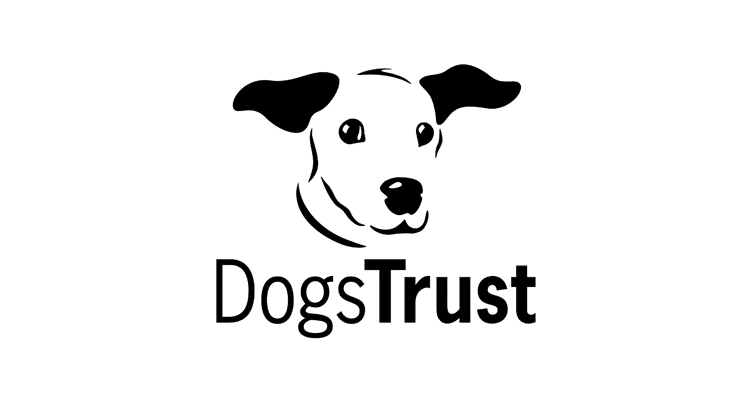

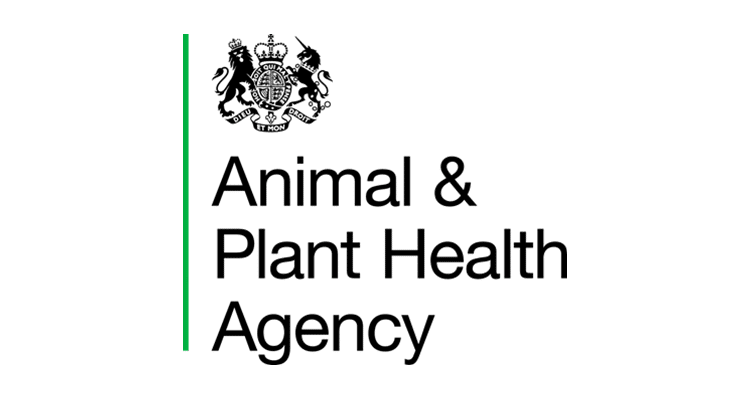


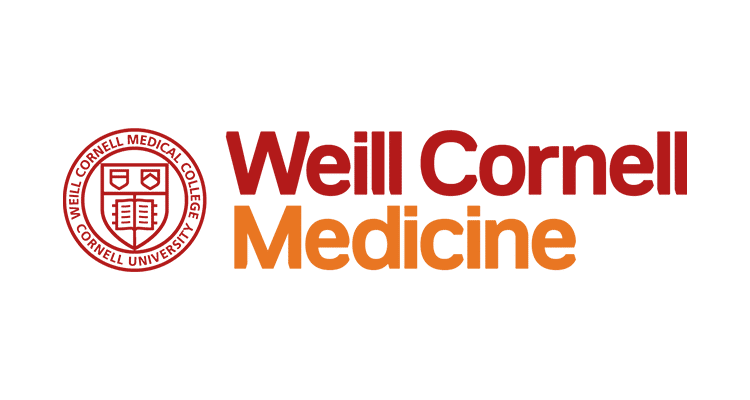
Ready To Get In Touch?
Get A Quote
Request A Sample
Ask A Technical Question
Get More Information
Use Our Contact Form >>>
We Typically Respond Within 24 Hours

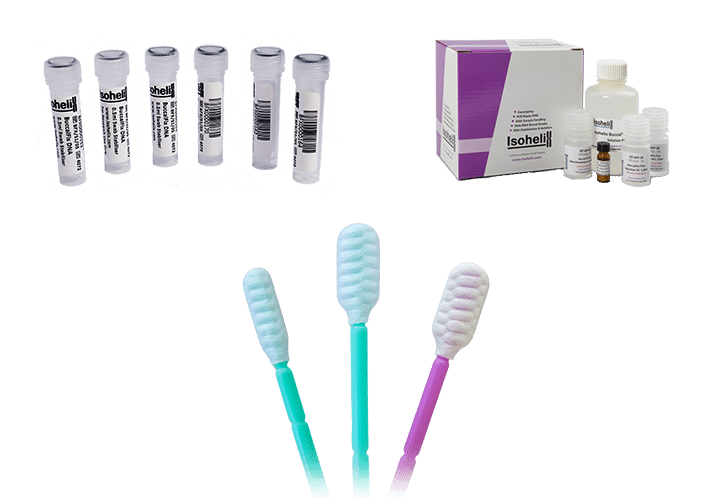

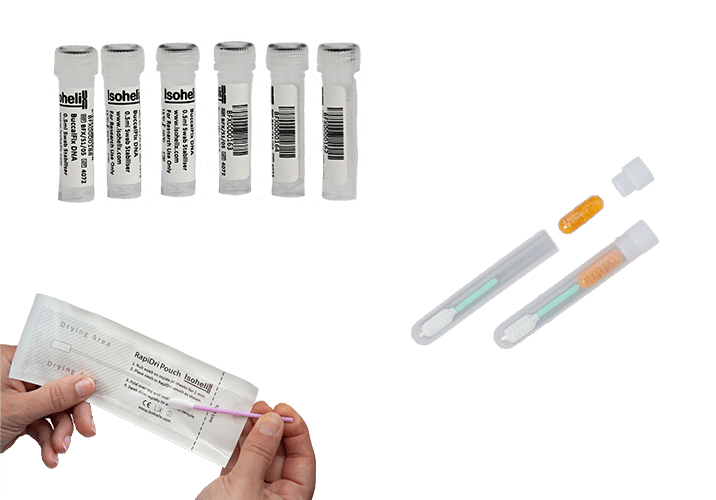
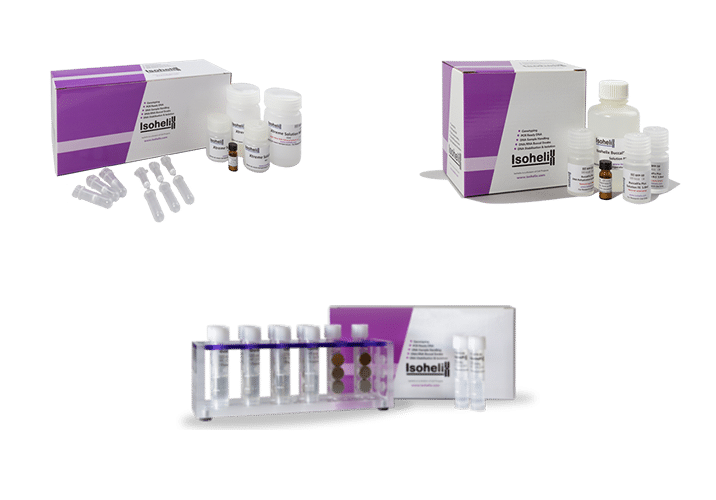
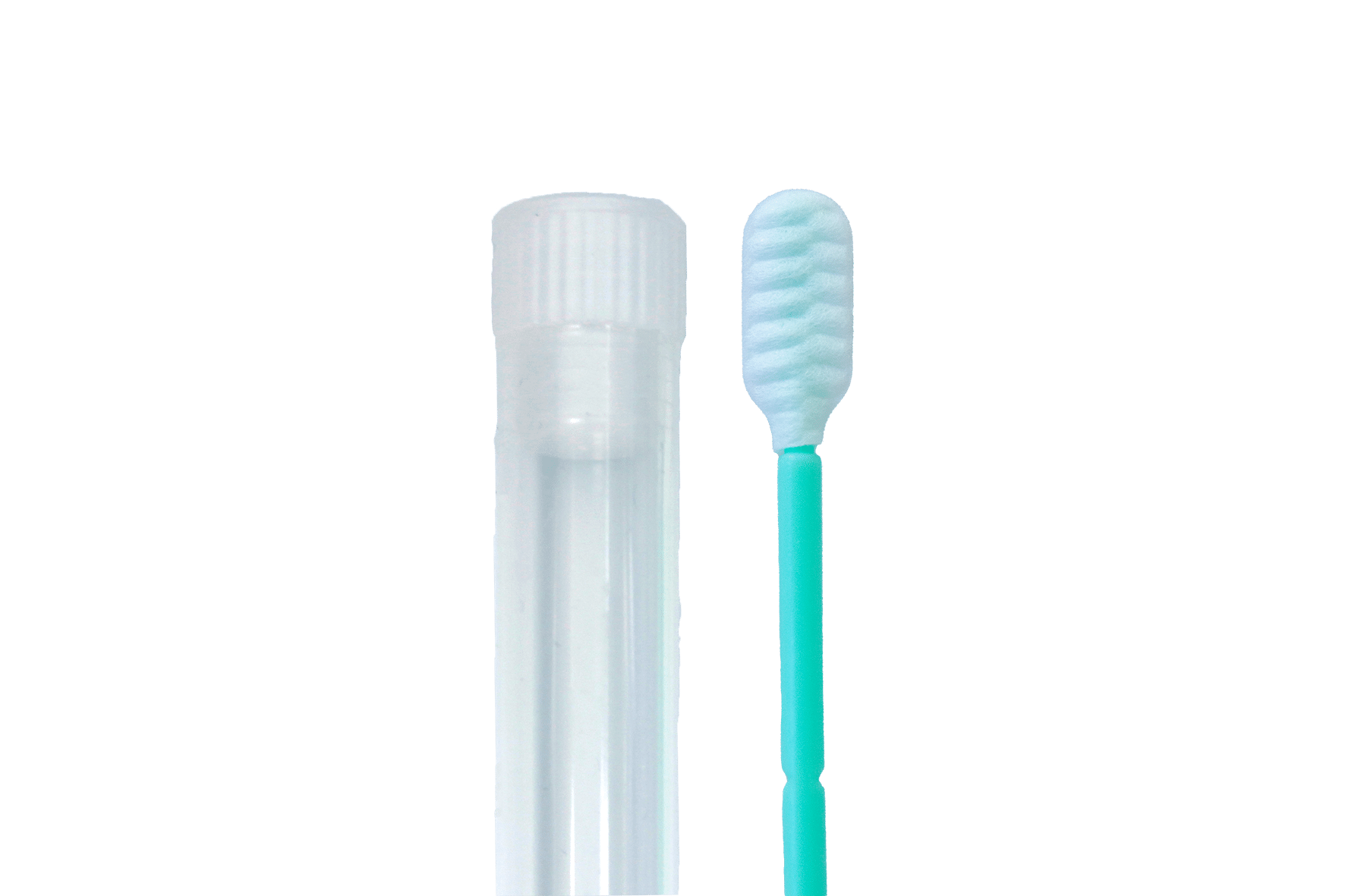
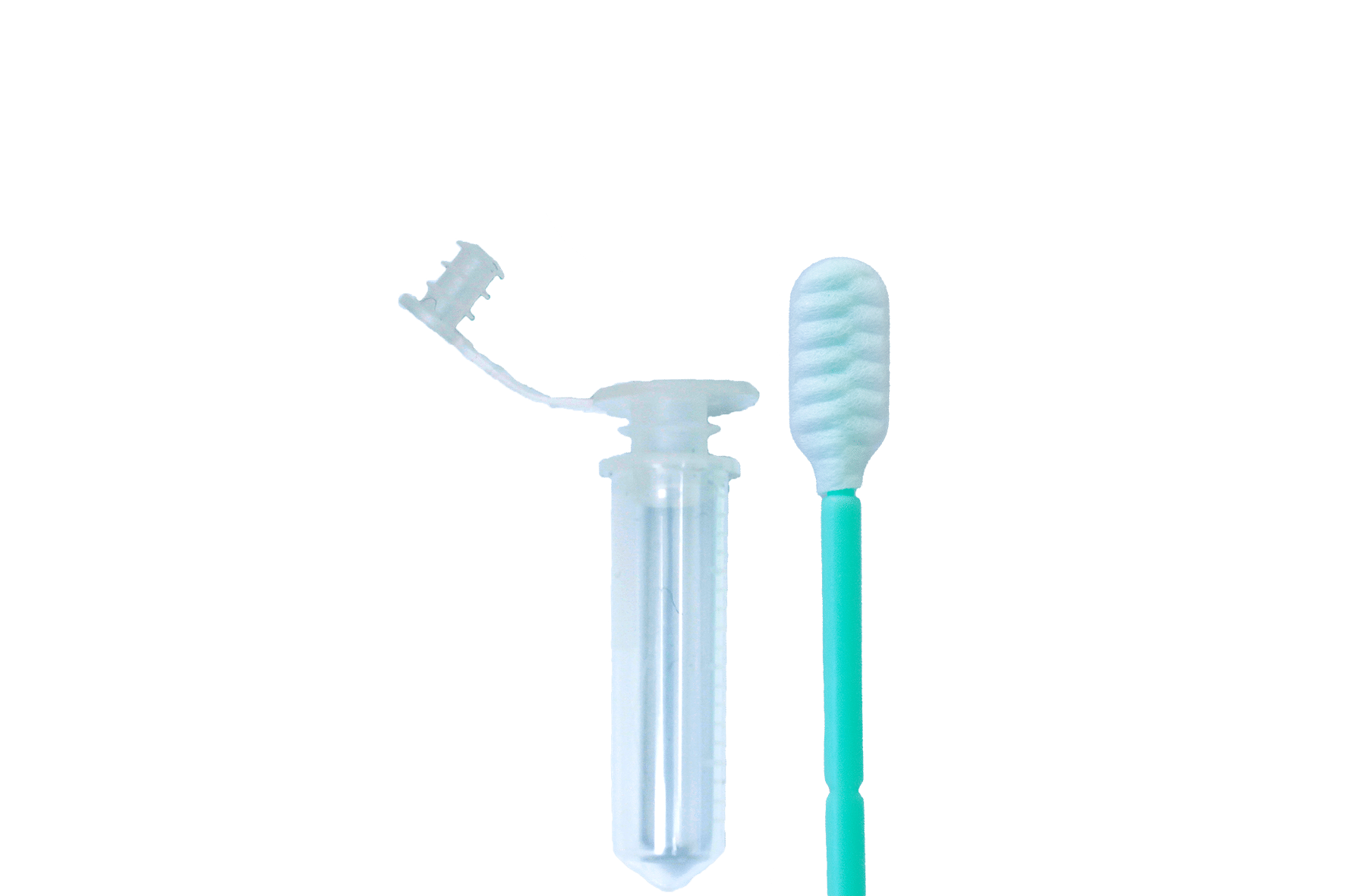
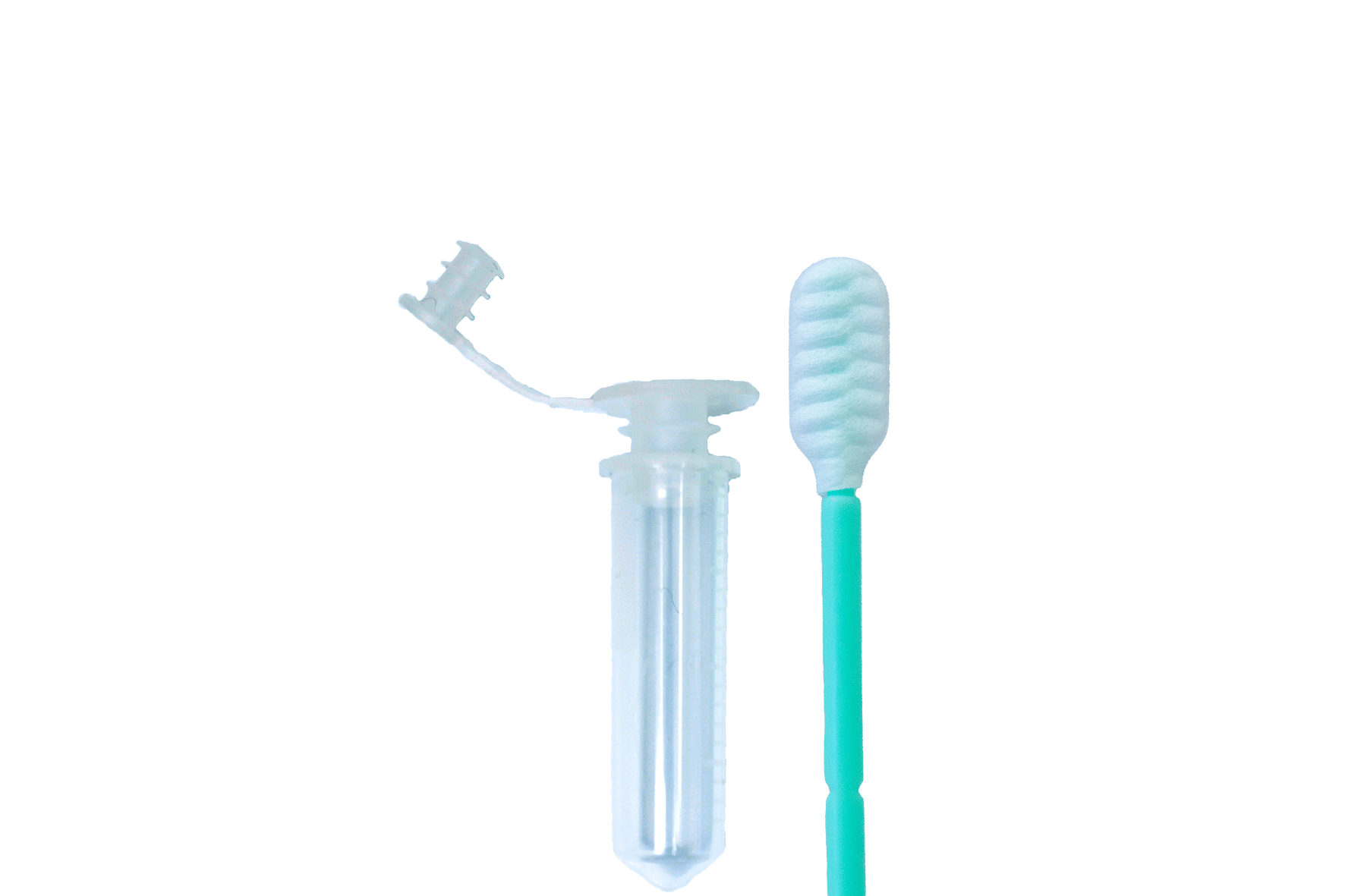
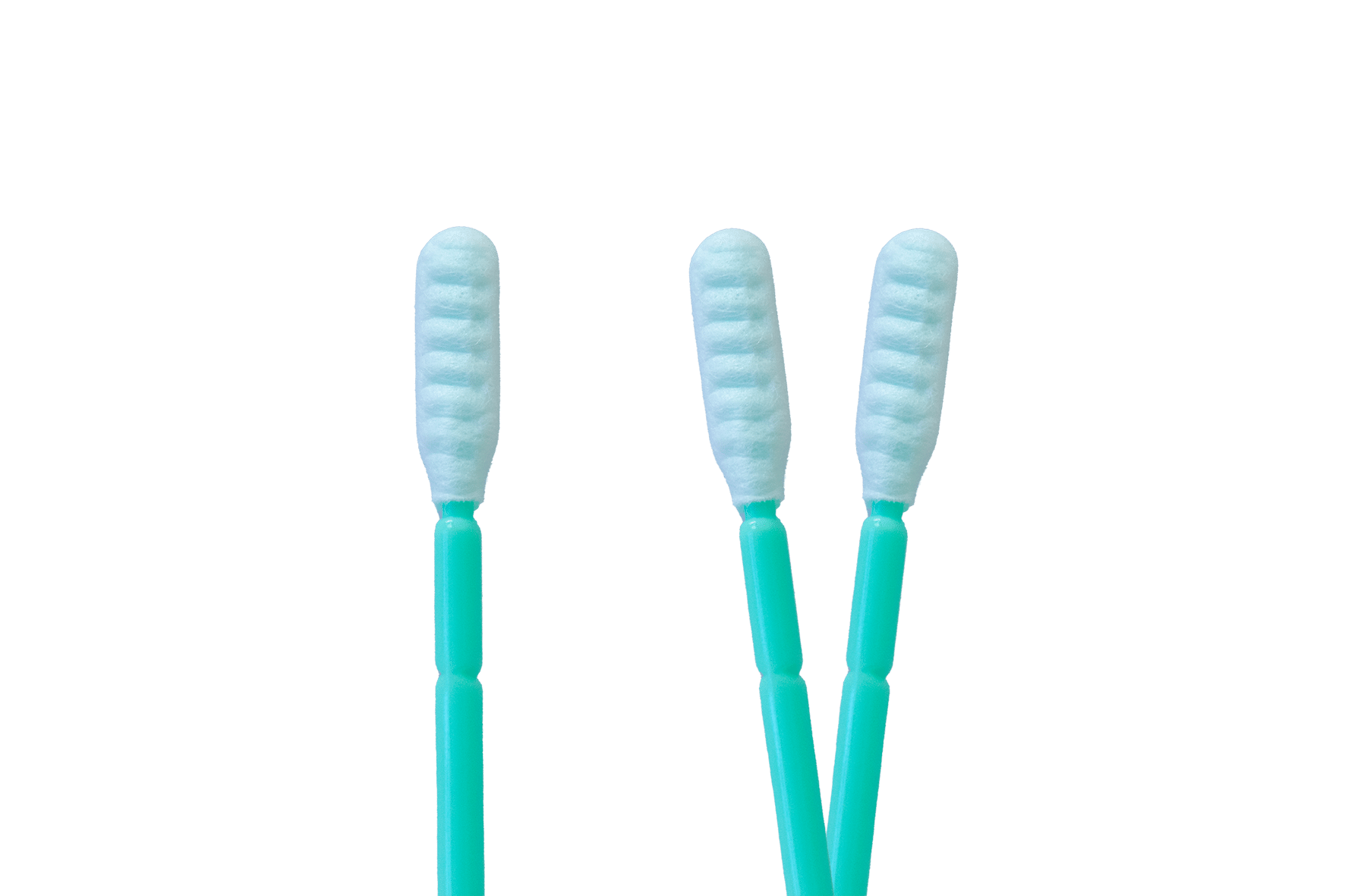
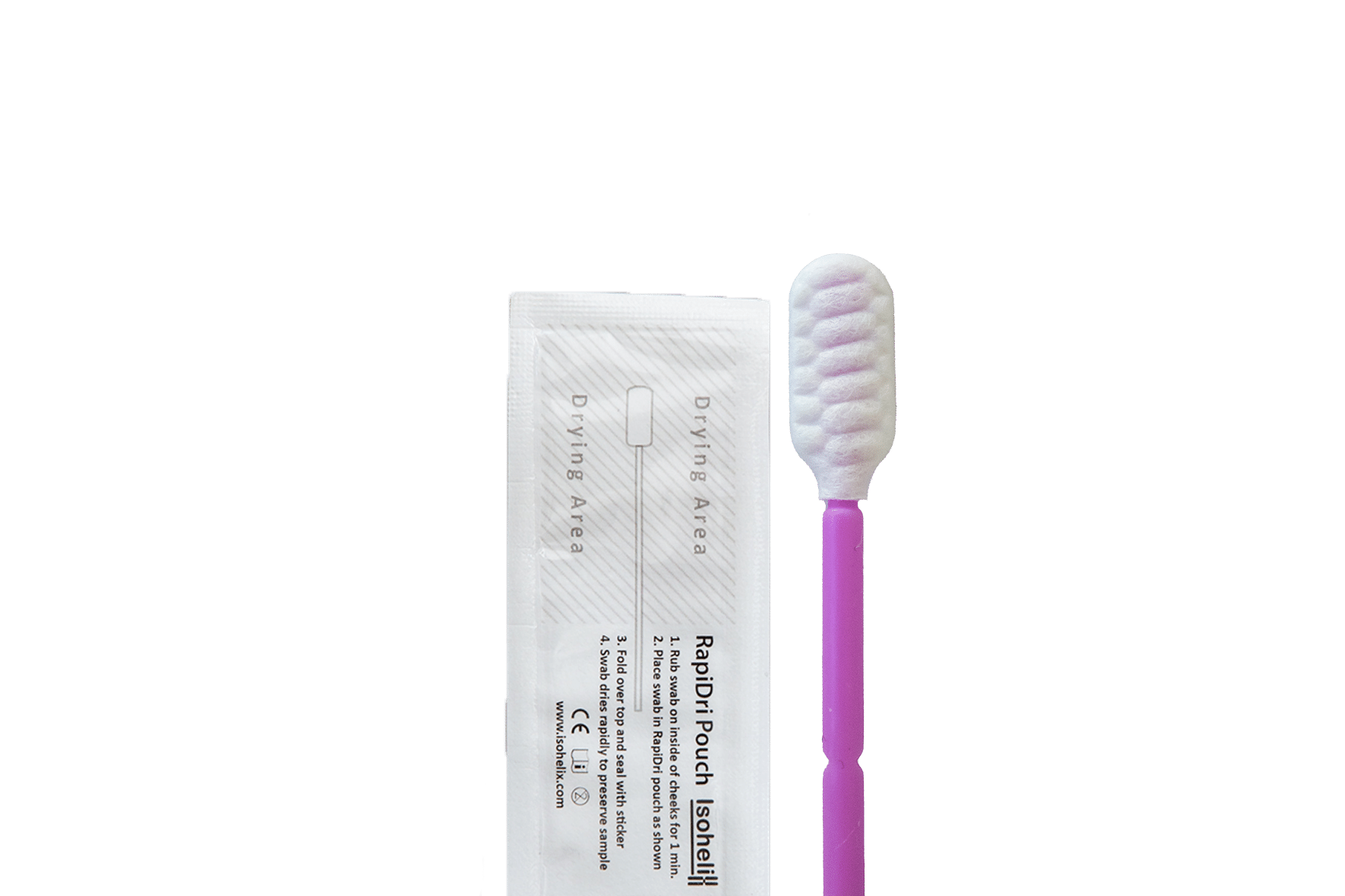
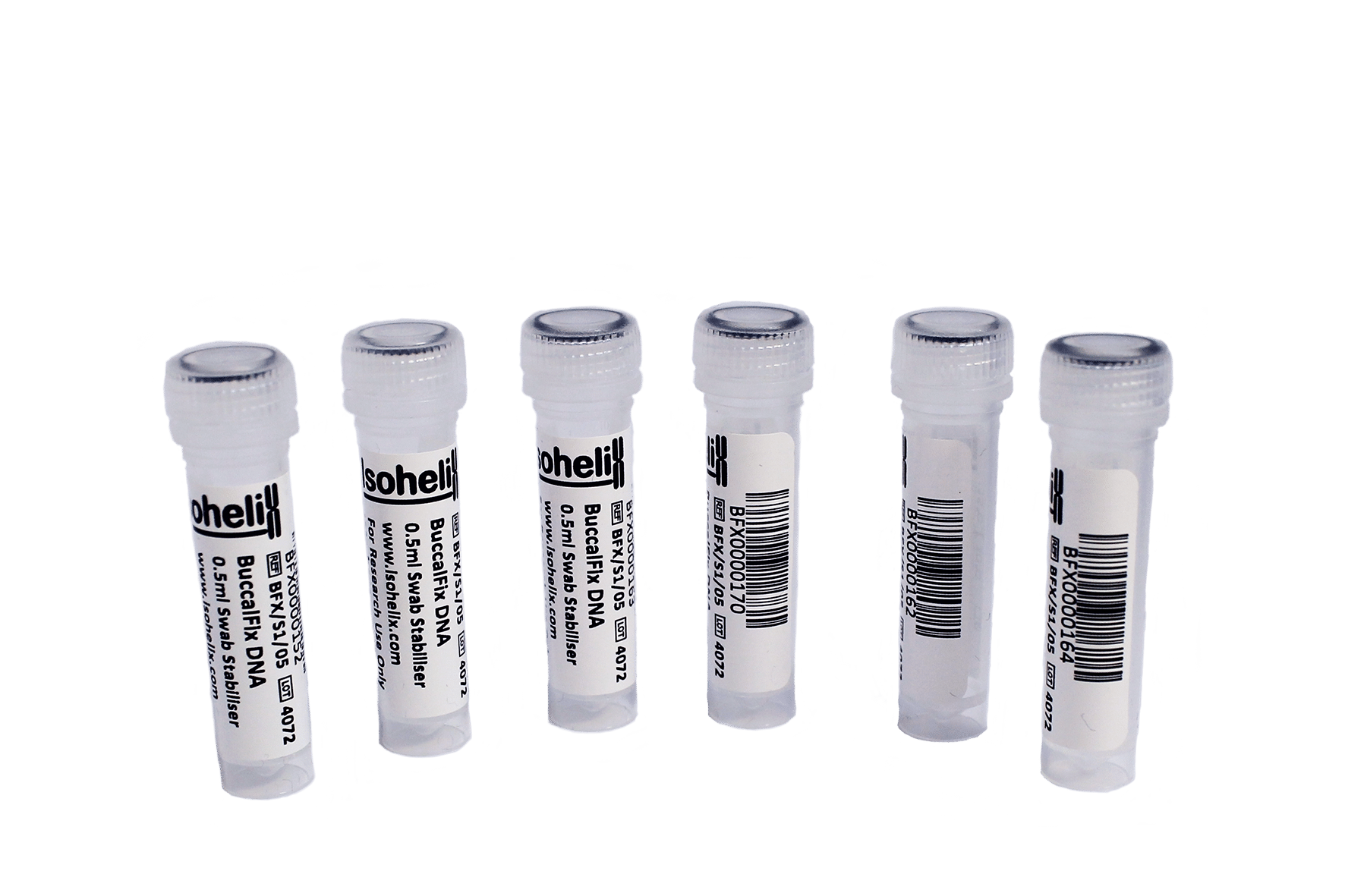

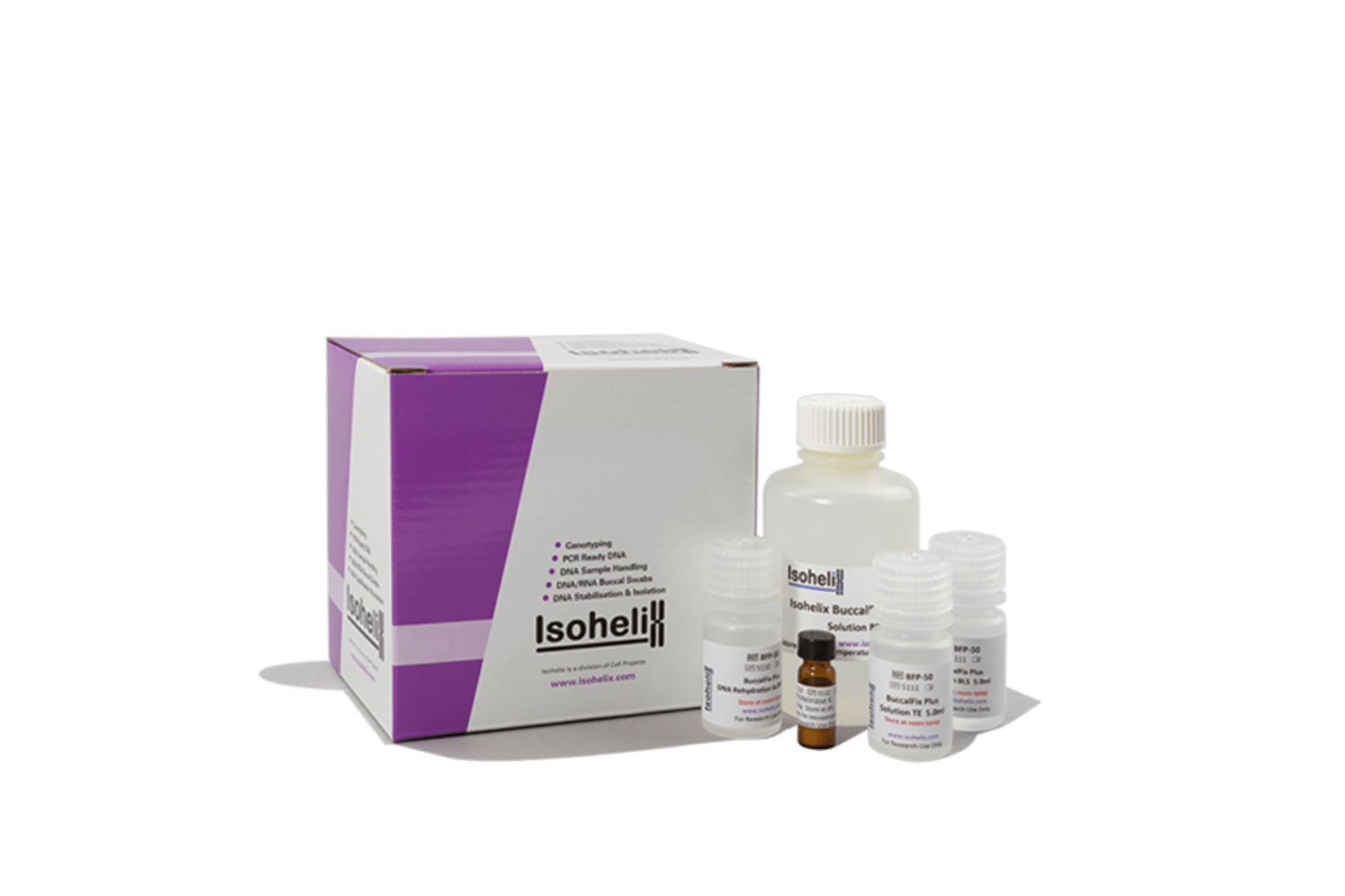
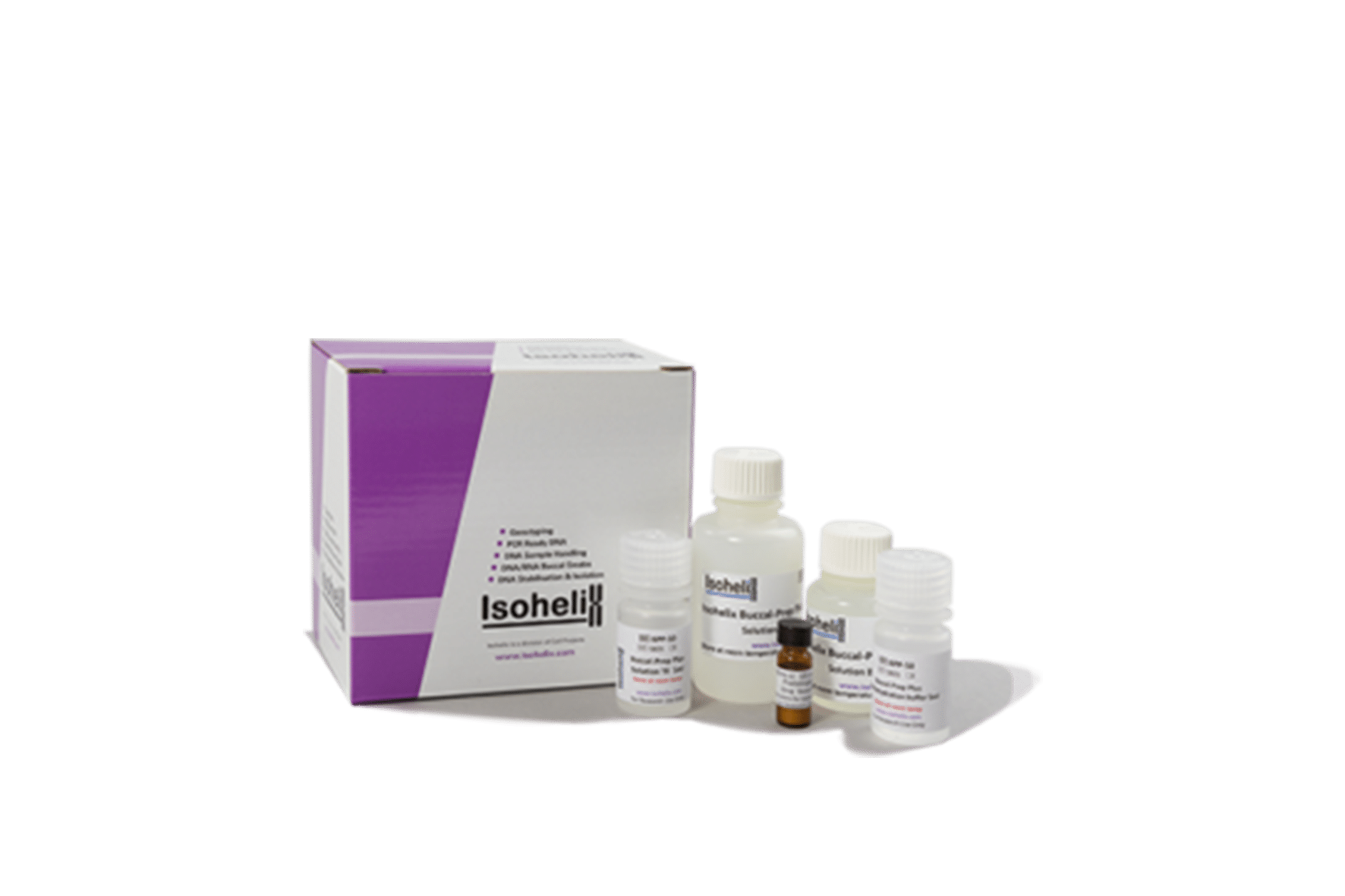
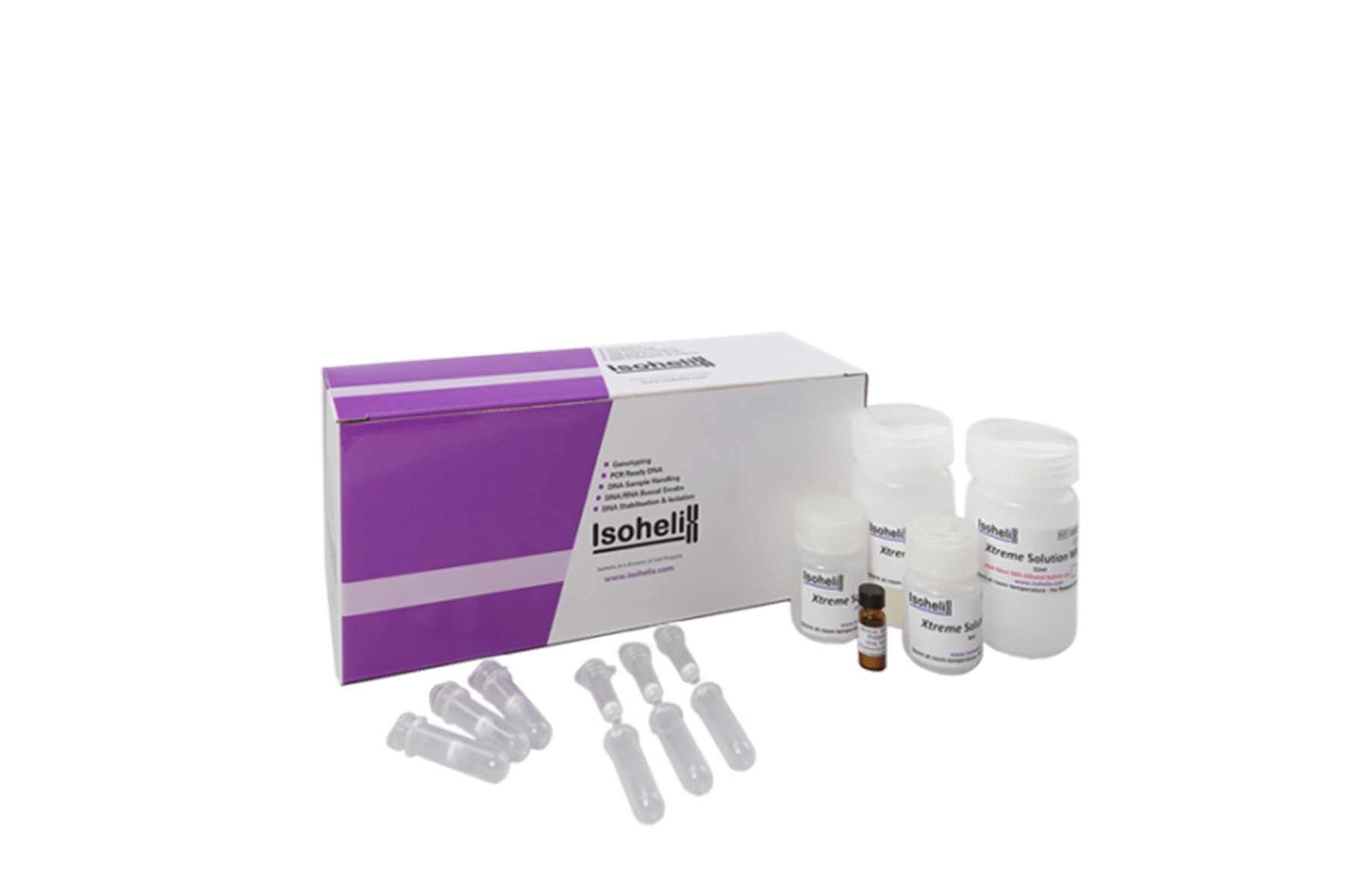
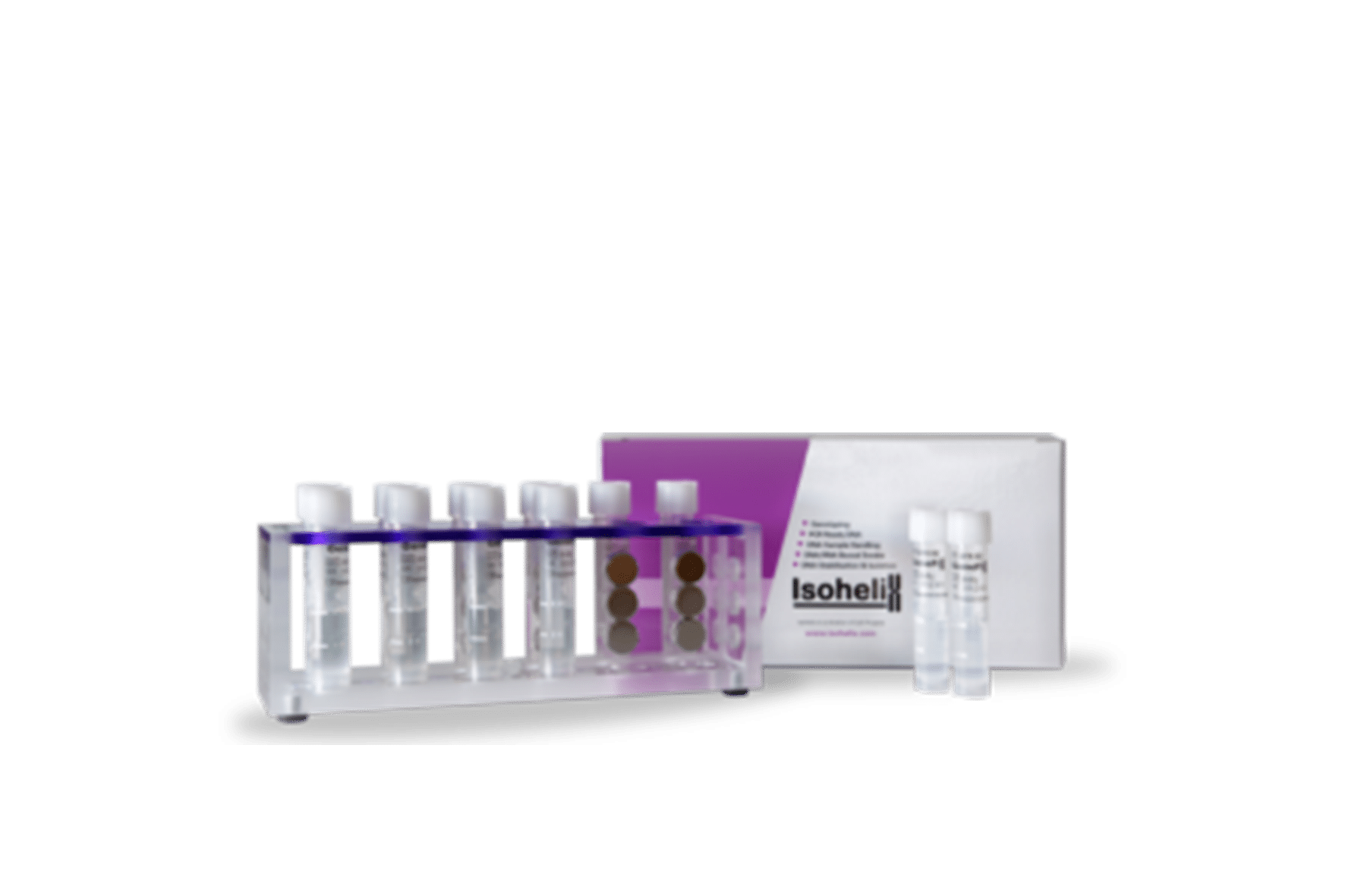
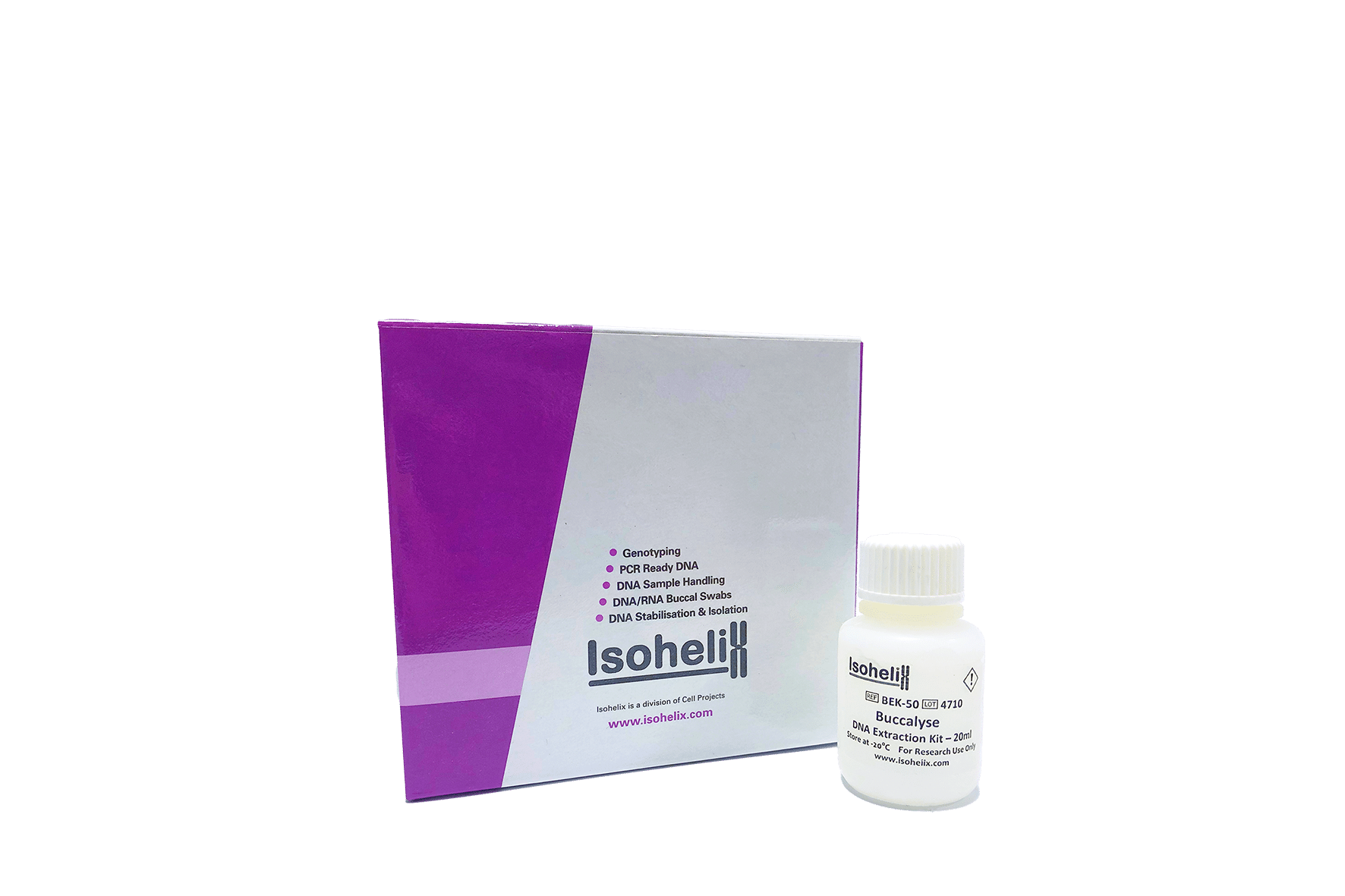
 Email Us
Email Us